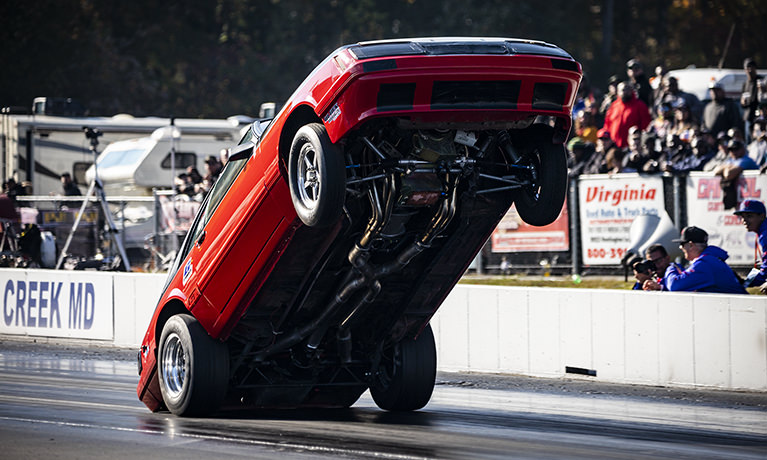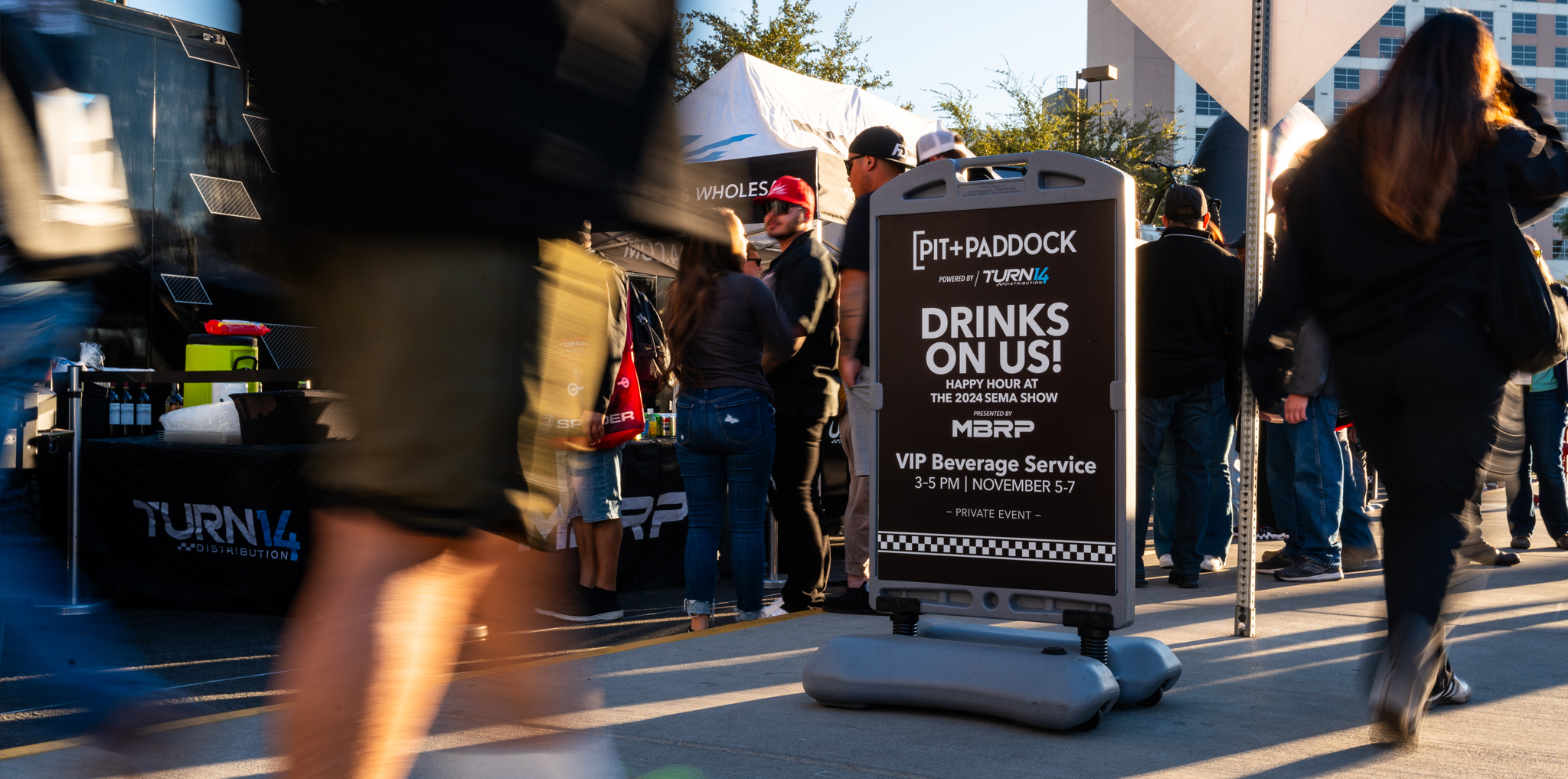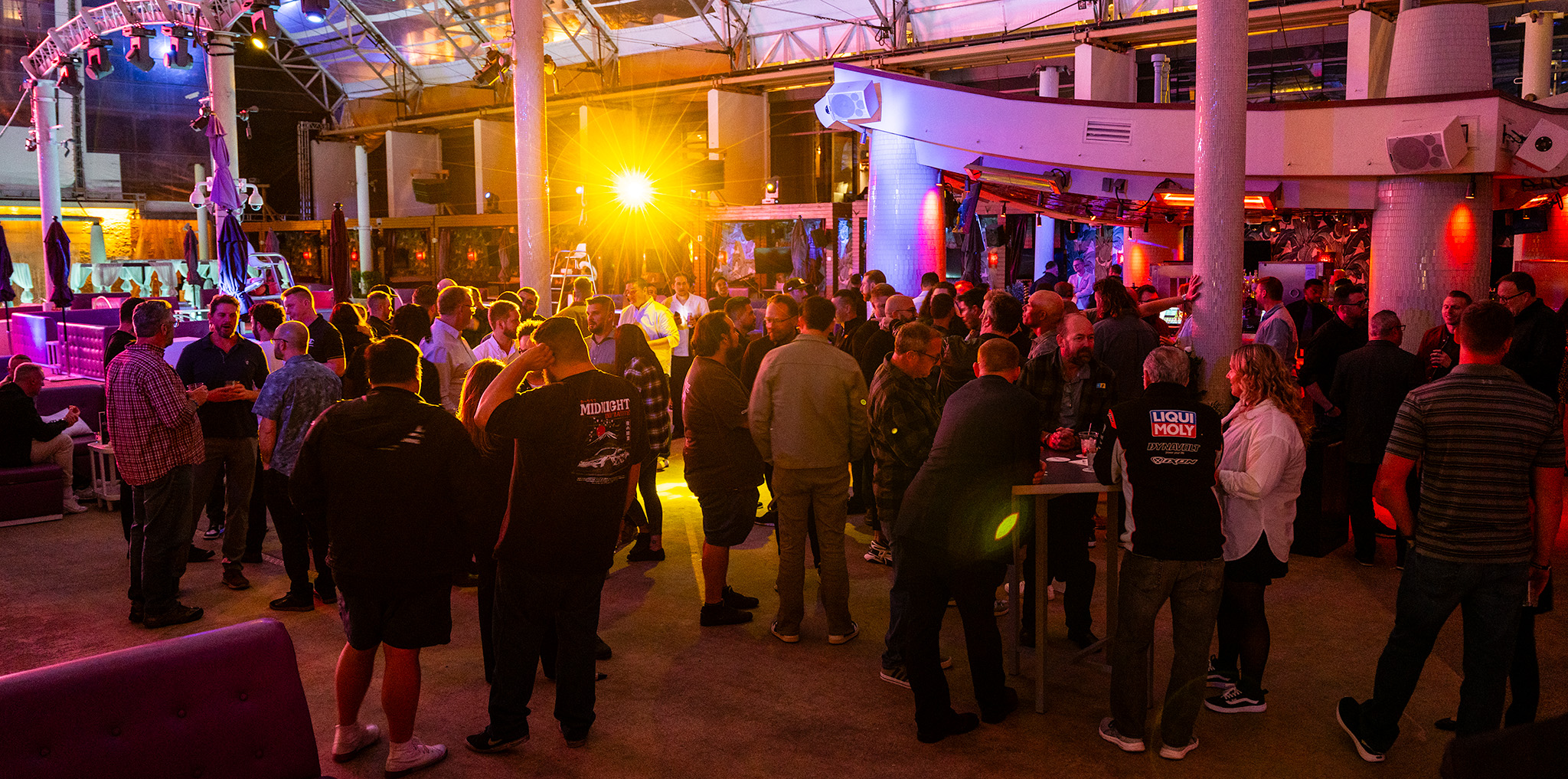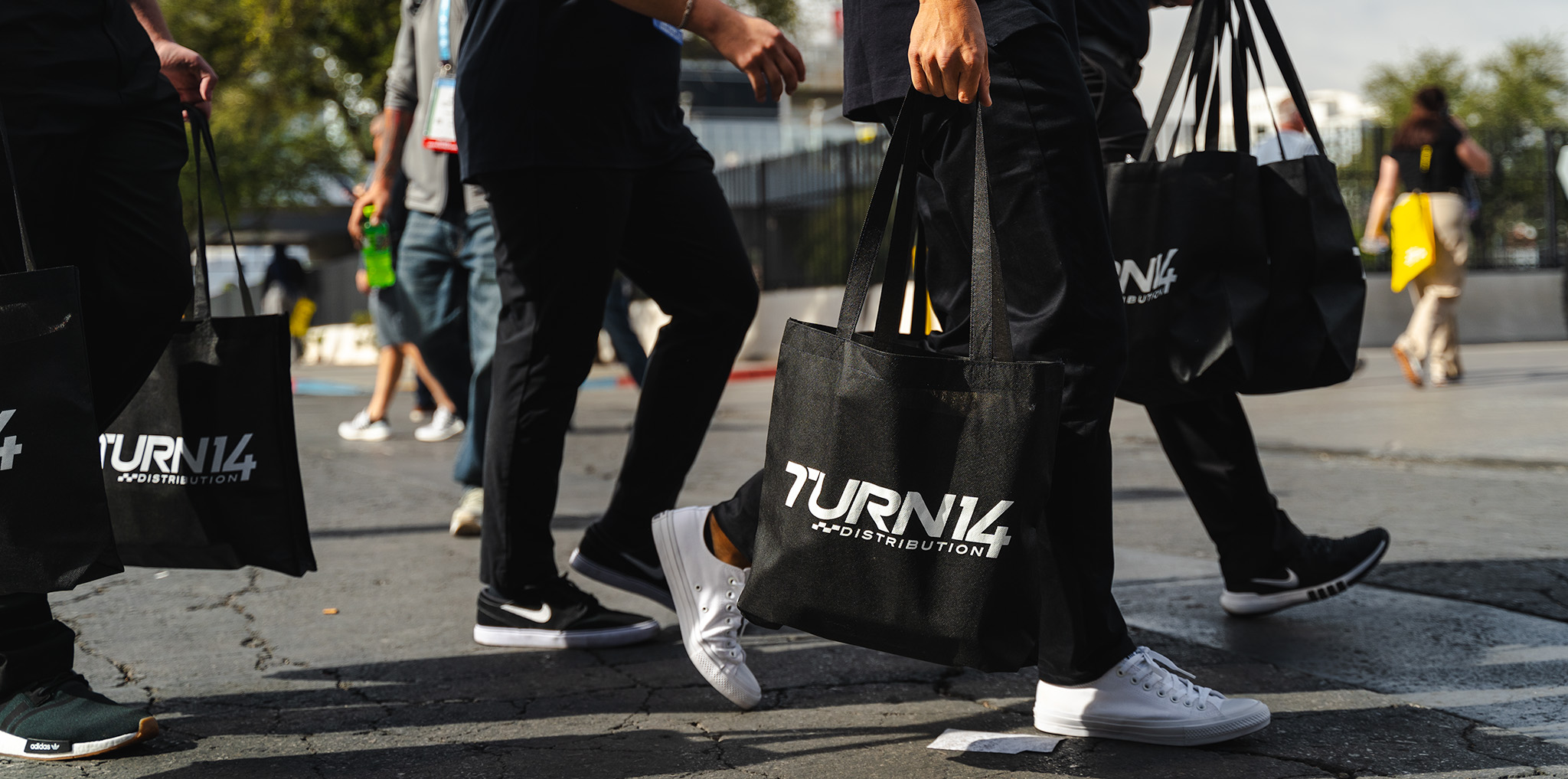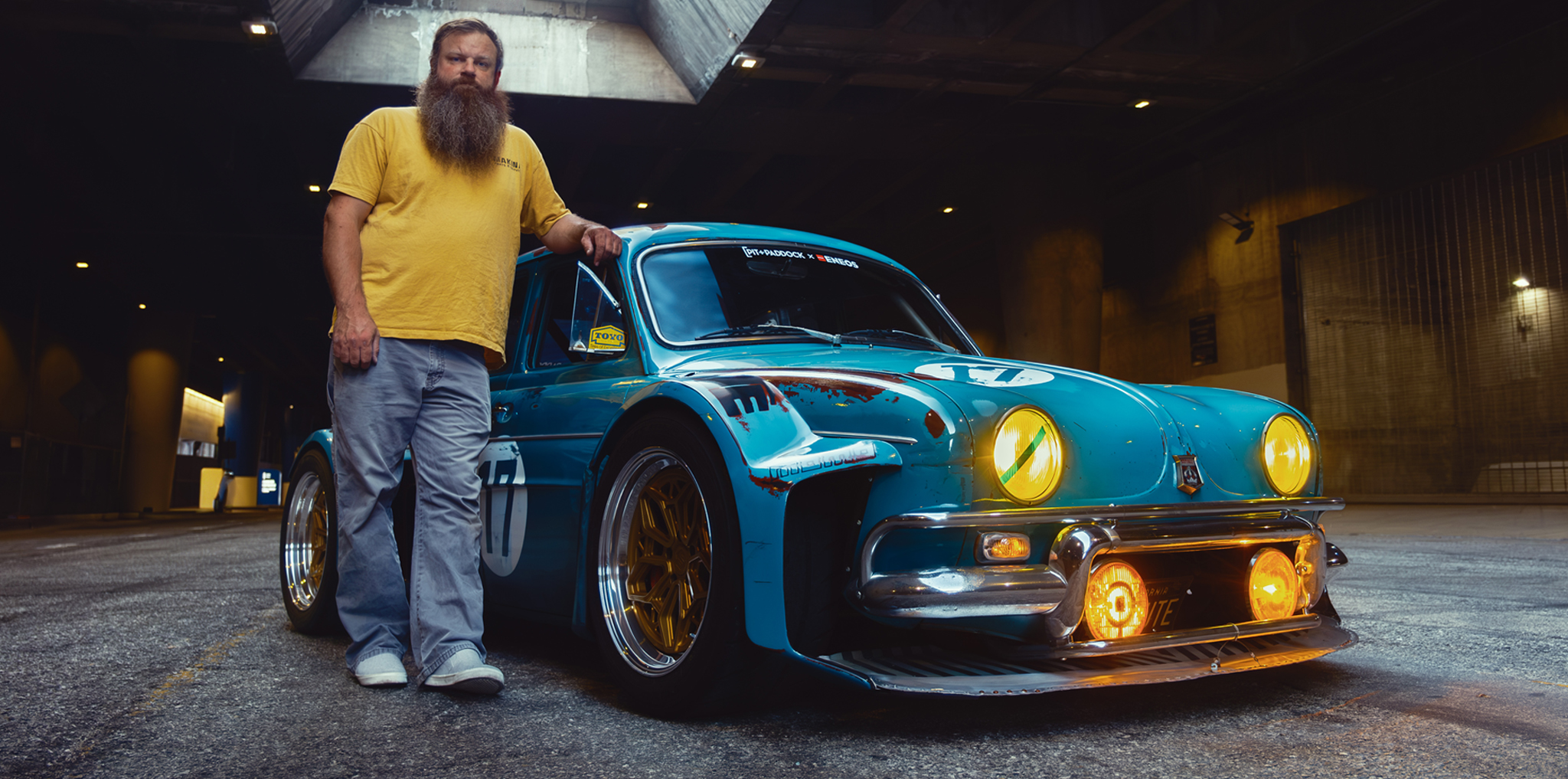Many will agree that the Haltech World Cup Finals Import vs. Domestic race, presented by MBProductions, is the heads-up quarter-mile drag racing event of the year. This year, the event celebrated its 24th anniversary, bringing over 45,000 fans from all over the world into Maryland International Raceway for almost a full week of racing action, with many thousands of other fans—from 175 different countries—tuned in to the live feed. Jason and Chris Miller are the madmen behind getting the import and domestic racers paired up into the same classes to battle it out for over $100,000 in winnings and a coveted World Cup Finals trophy.
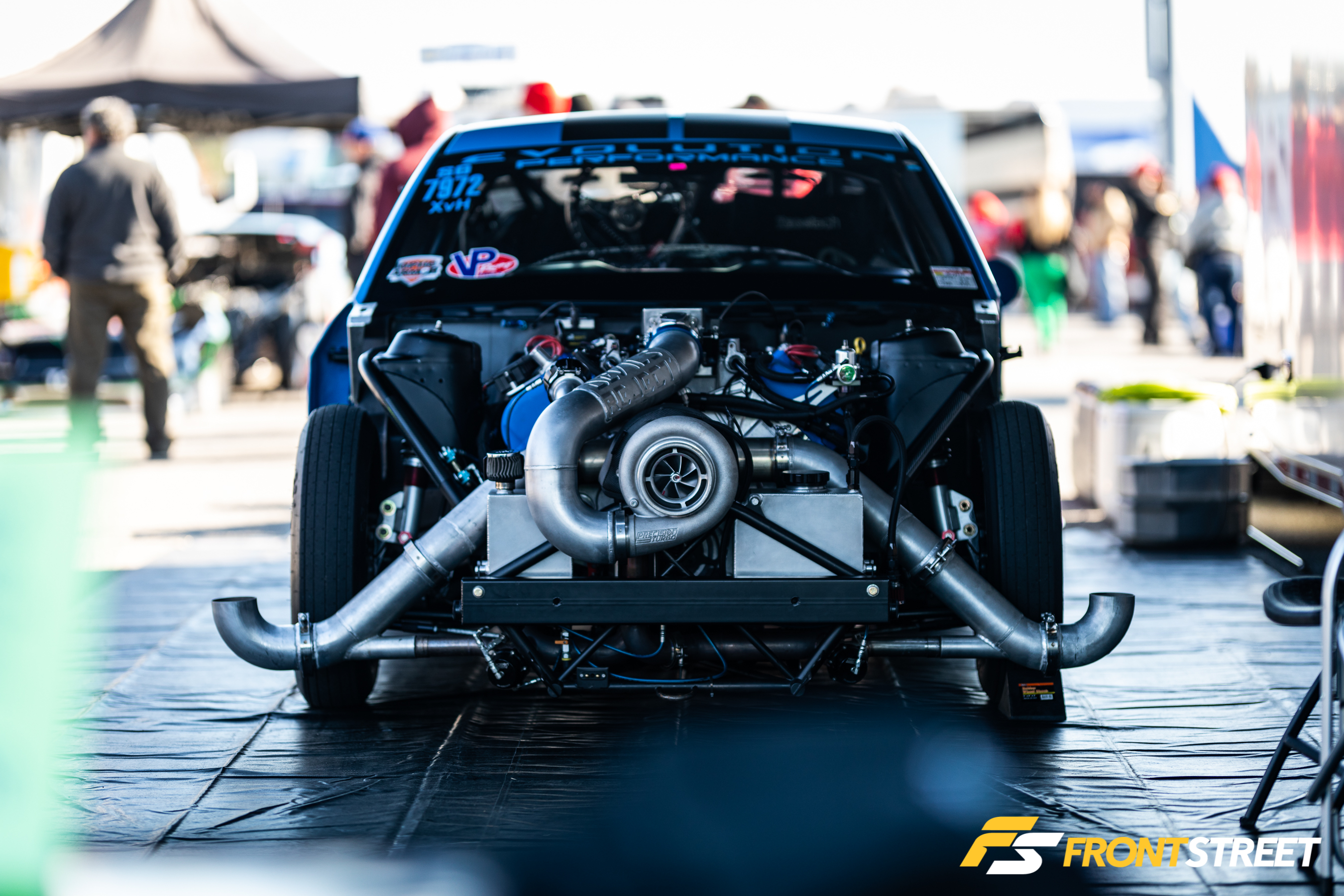
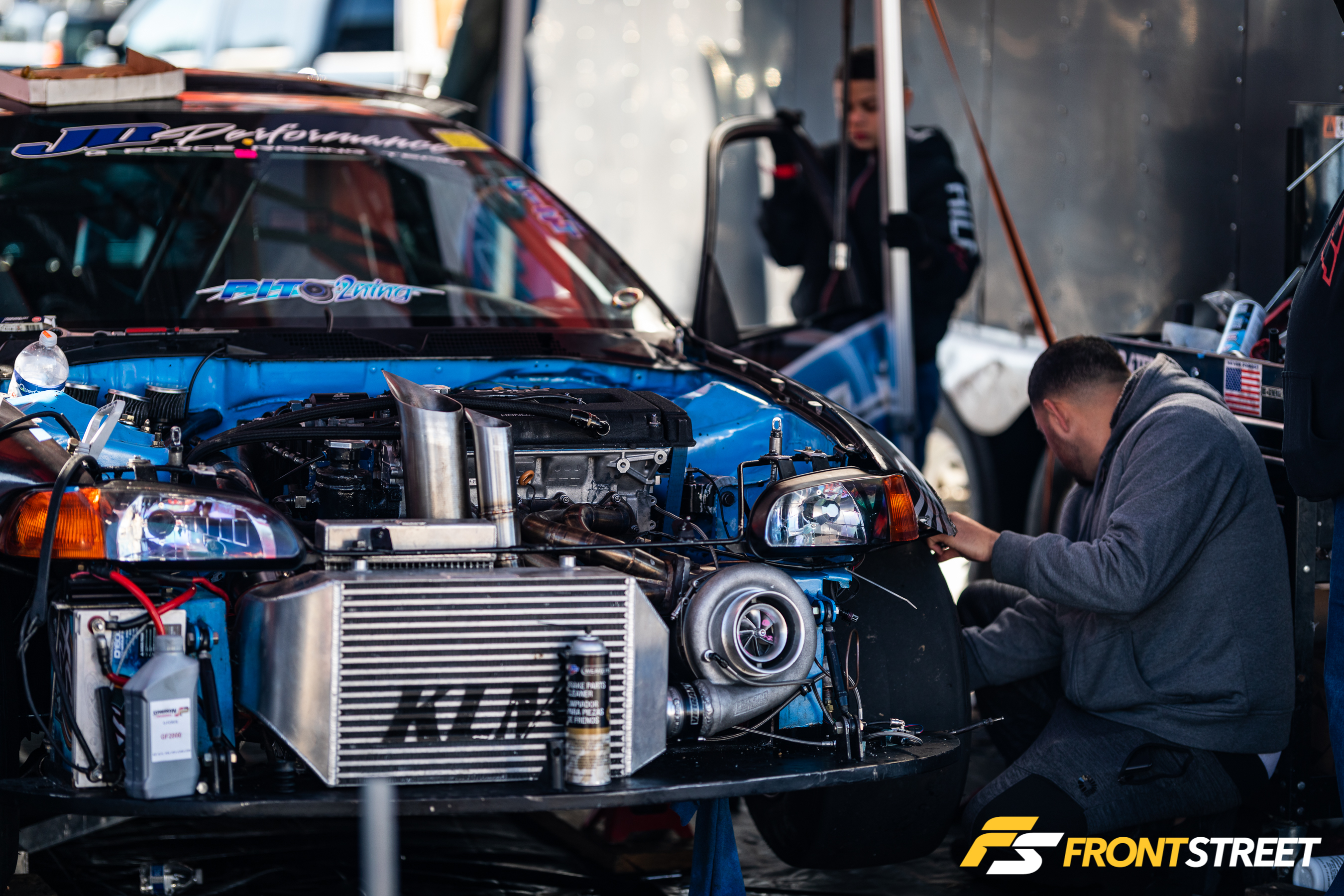
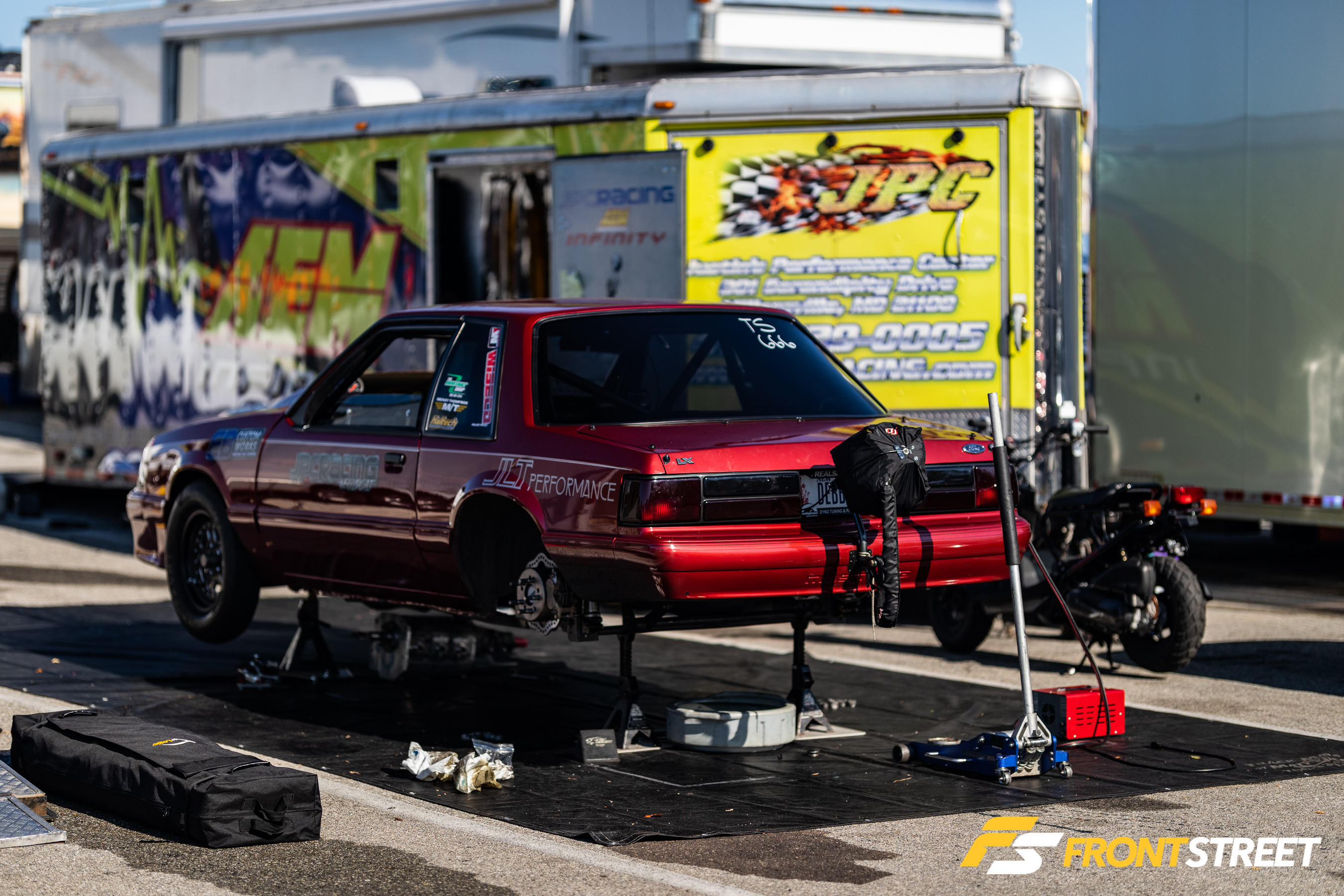
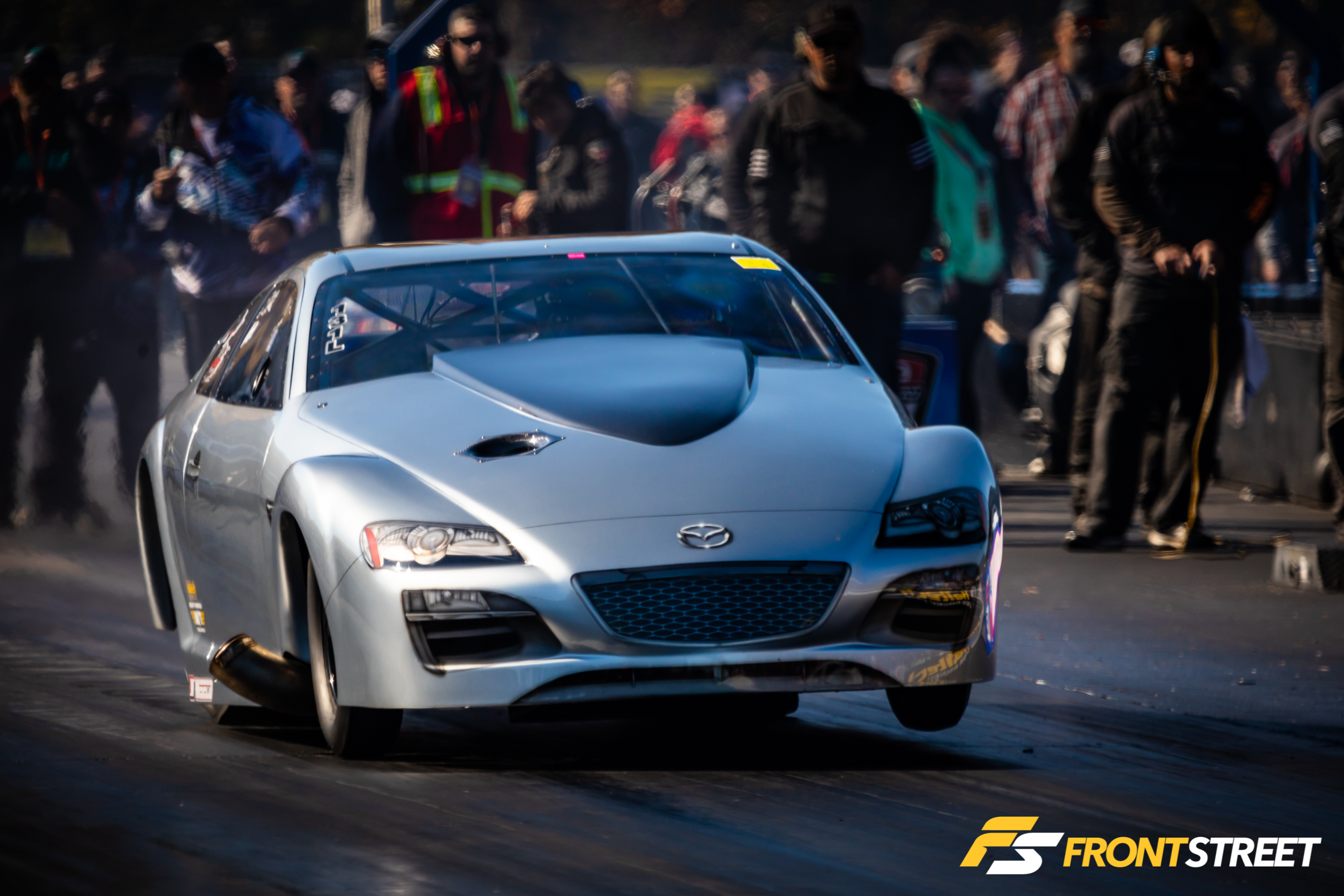
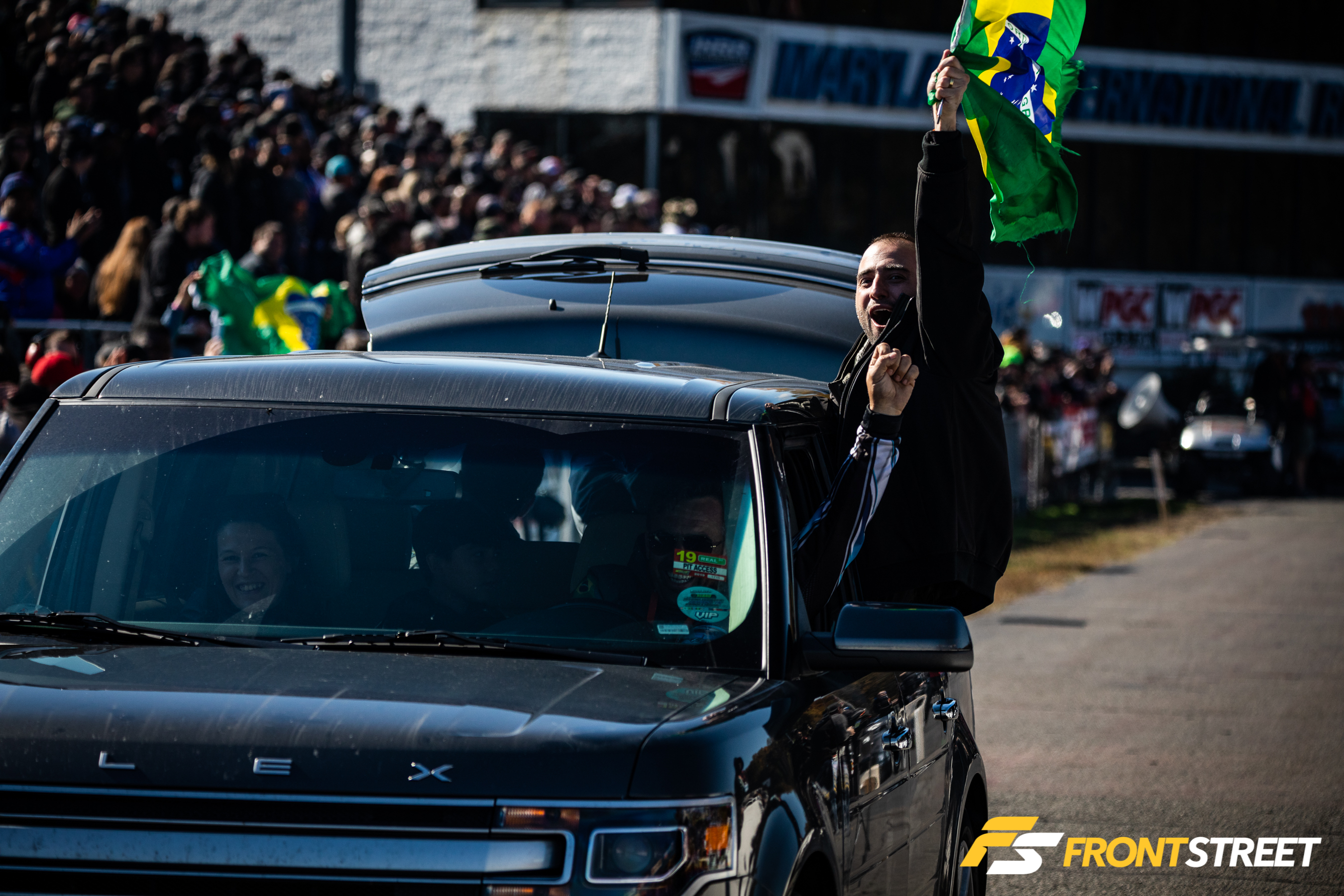
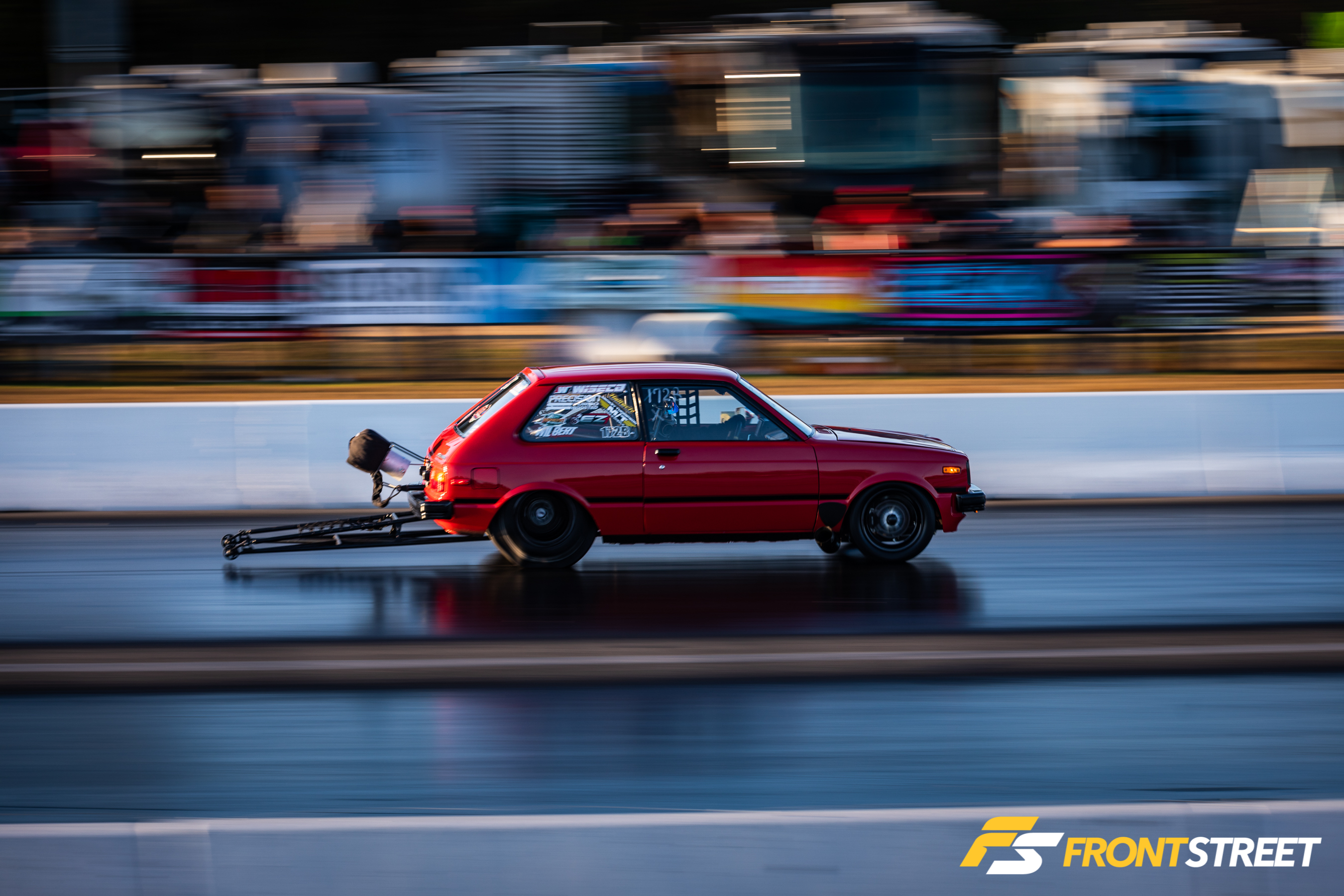
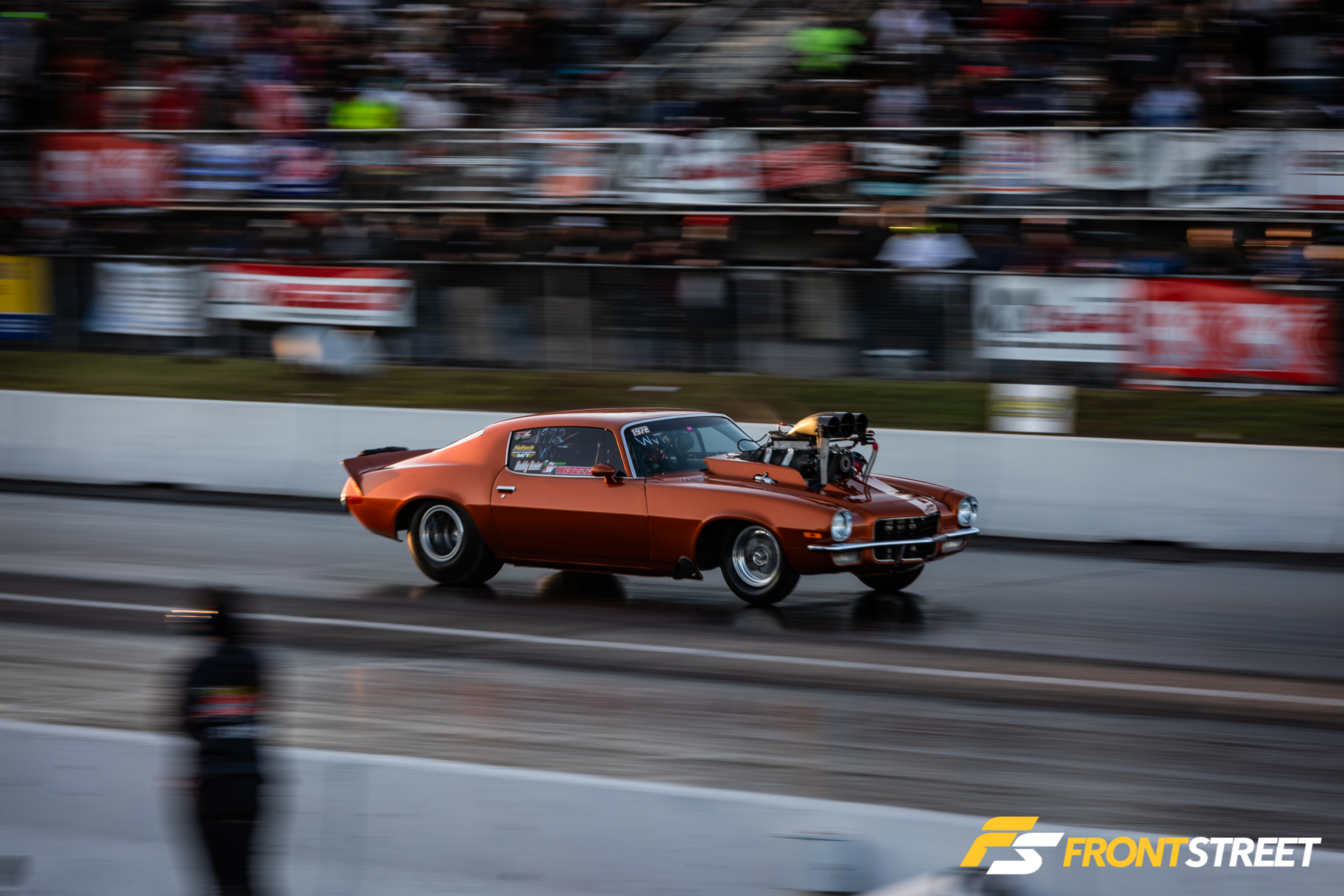
Hundreds of racers from 23 different countries—yes, I said 23—battled it out all week in qualifying in a concerted effort to make it into the 32-car field of each class. Many of these contenders have been preparing all year, and traveled from vast distances such as Brazil and Kuwait, to have a chance to compete in this event. As the event has grown, the Miller brothers knew they were onto something. The pair are known to be experts in the craft of track preparation, and when you consider the excellent power-making weather in this location at this time of year, it’s easy to see why the World Cup Finals have grown so well.
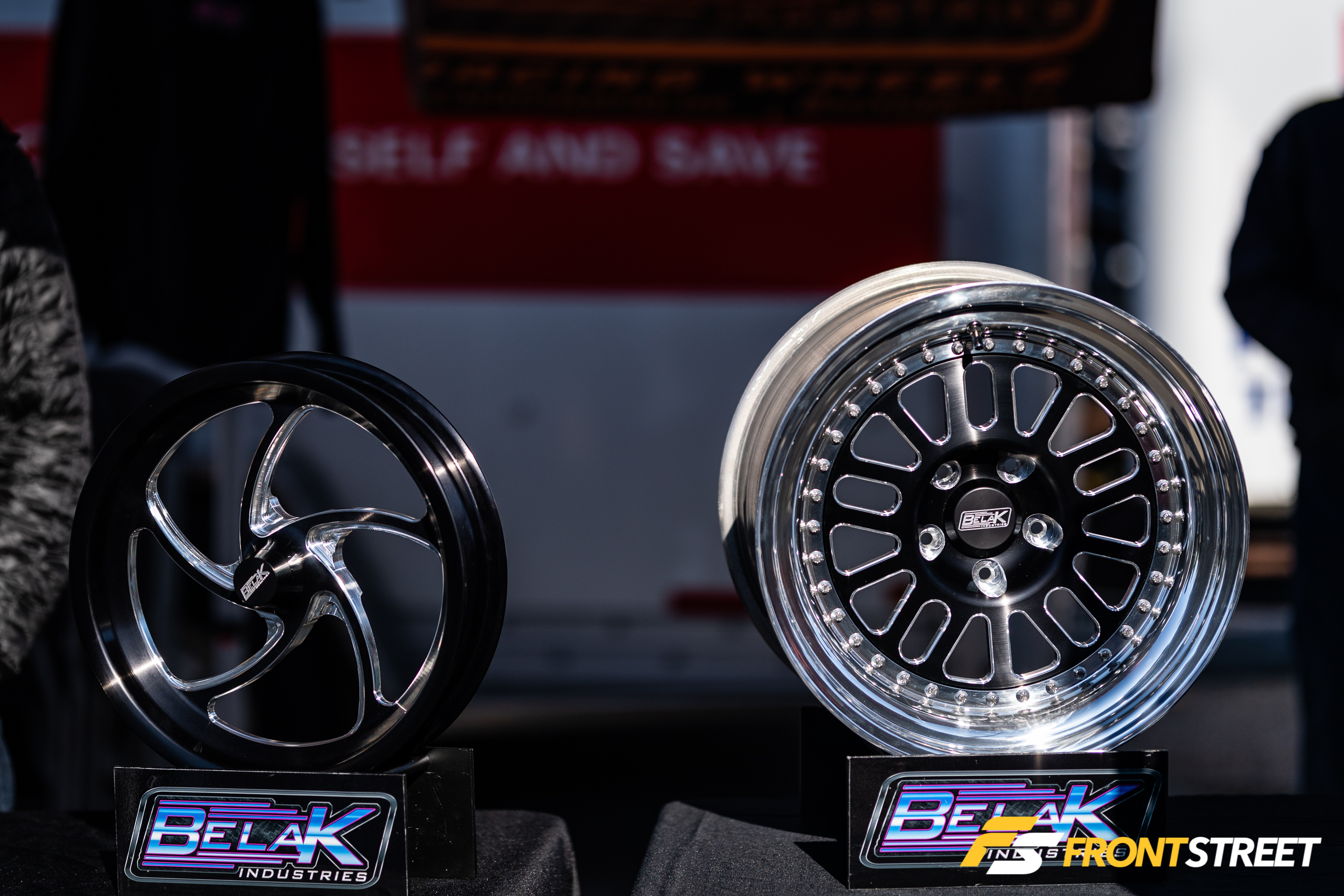
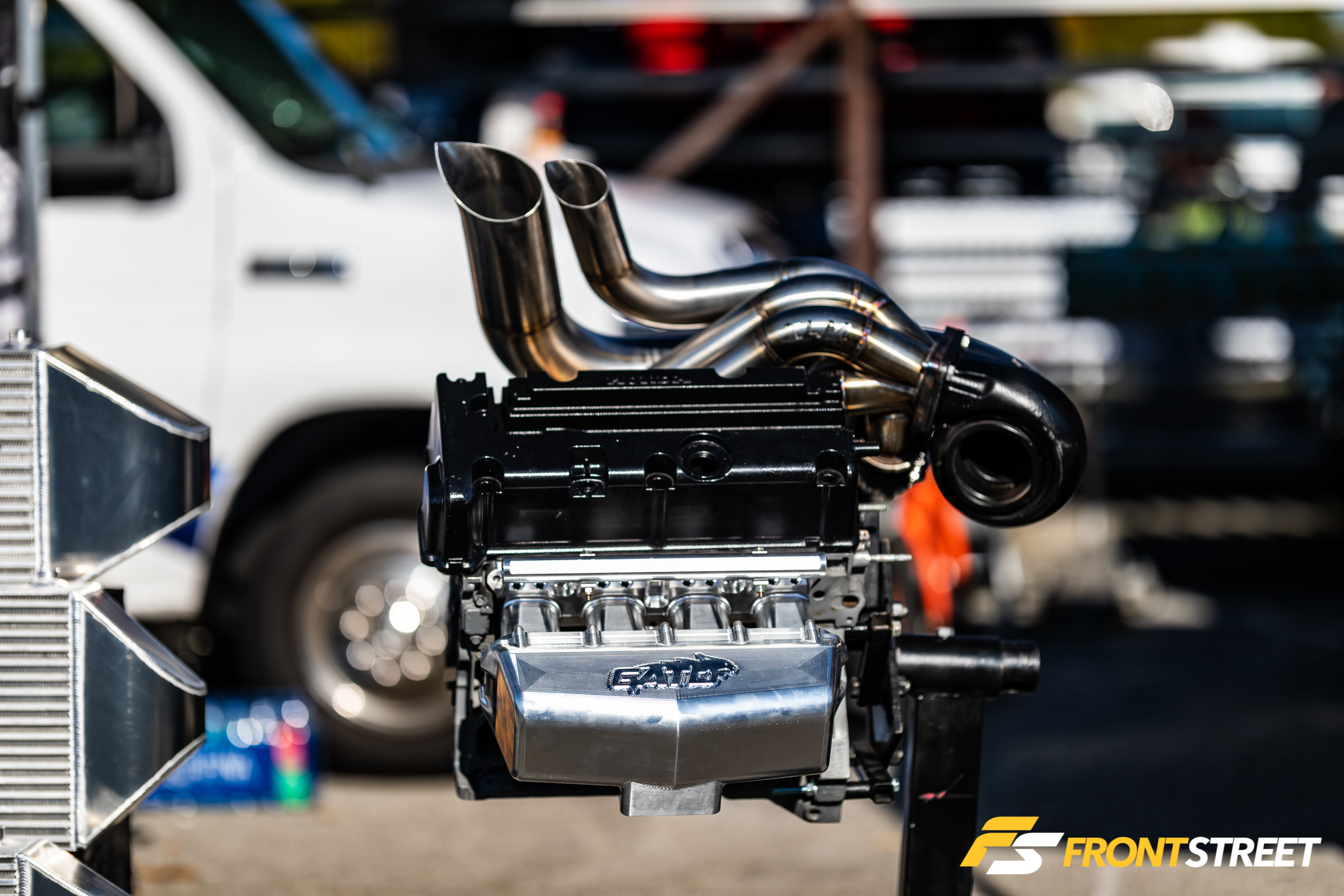
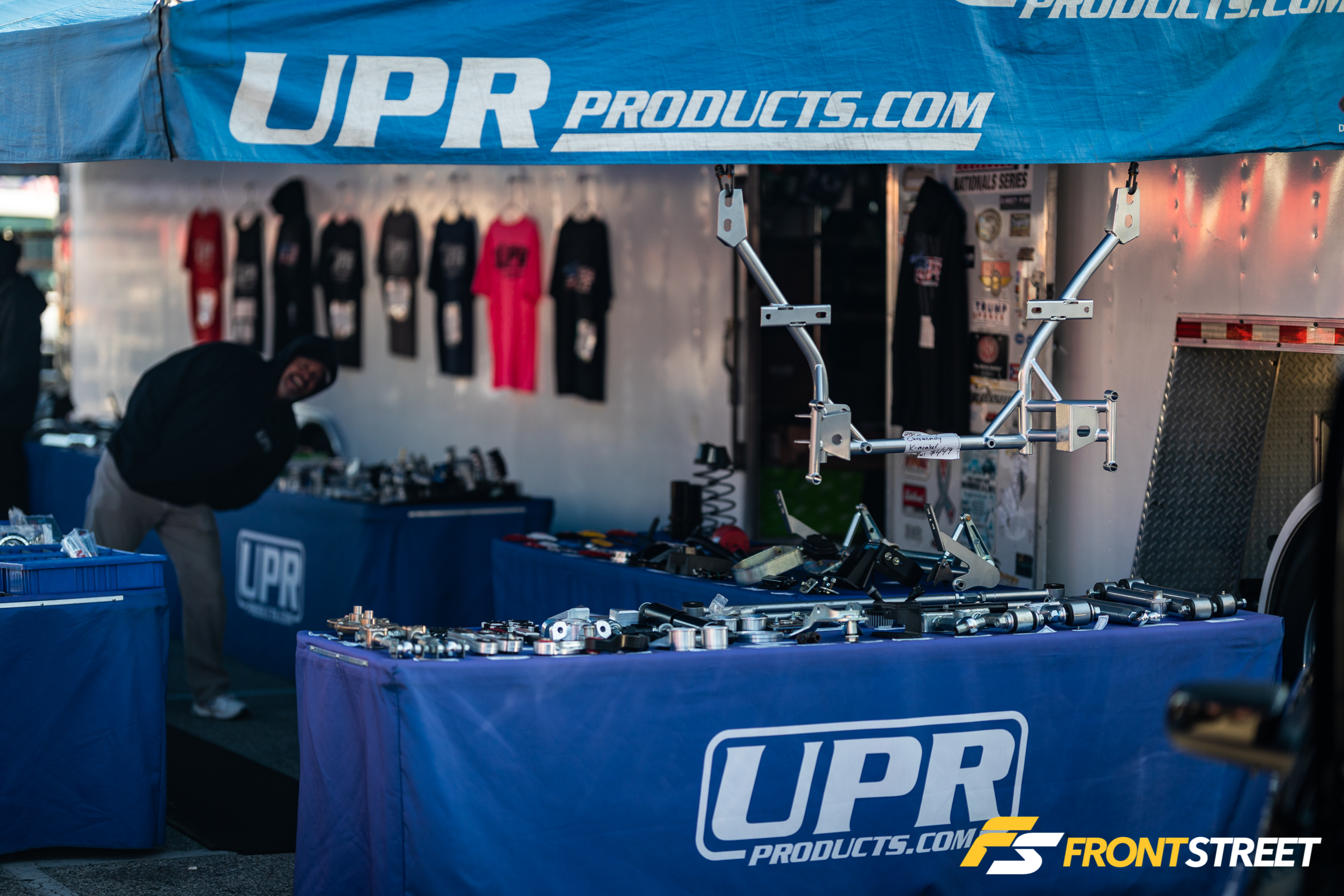
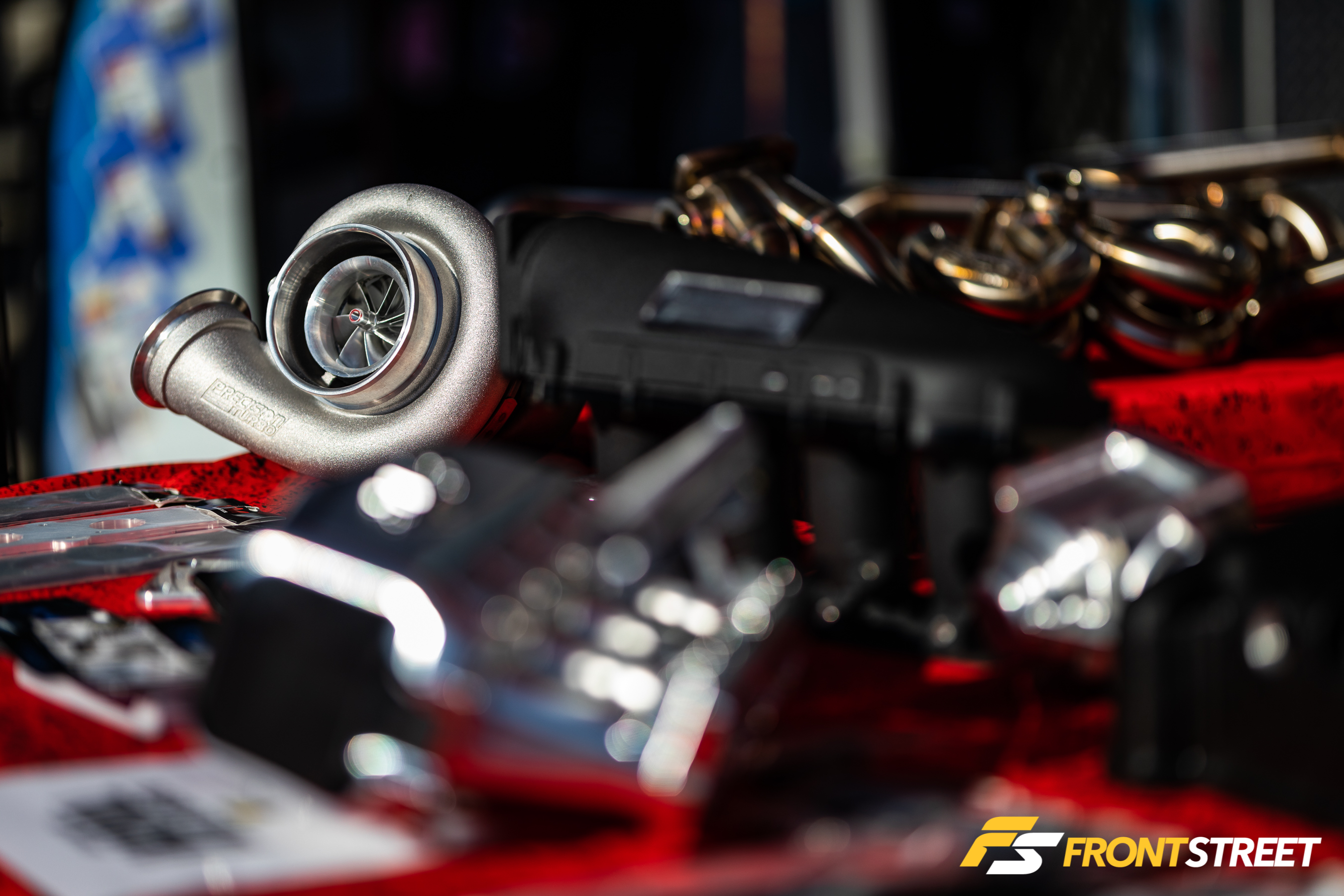
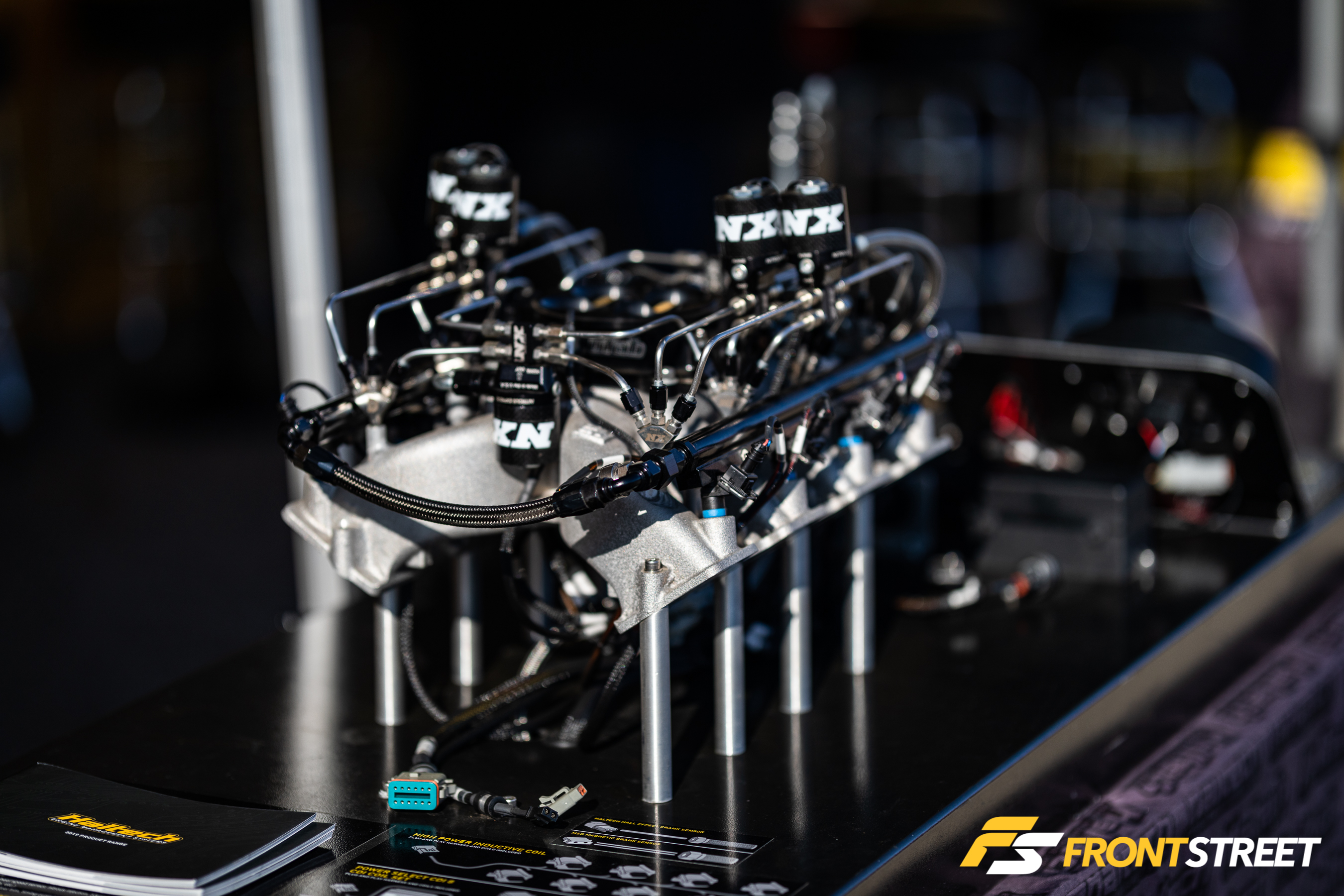
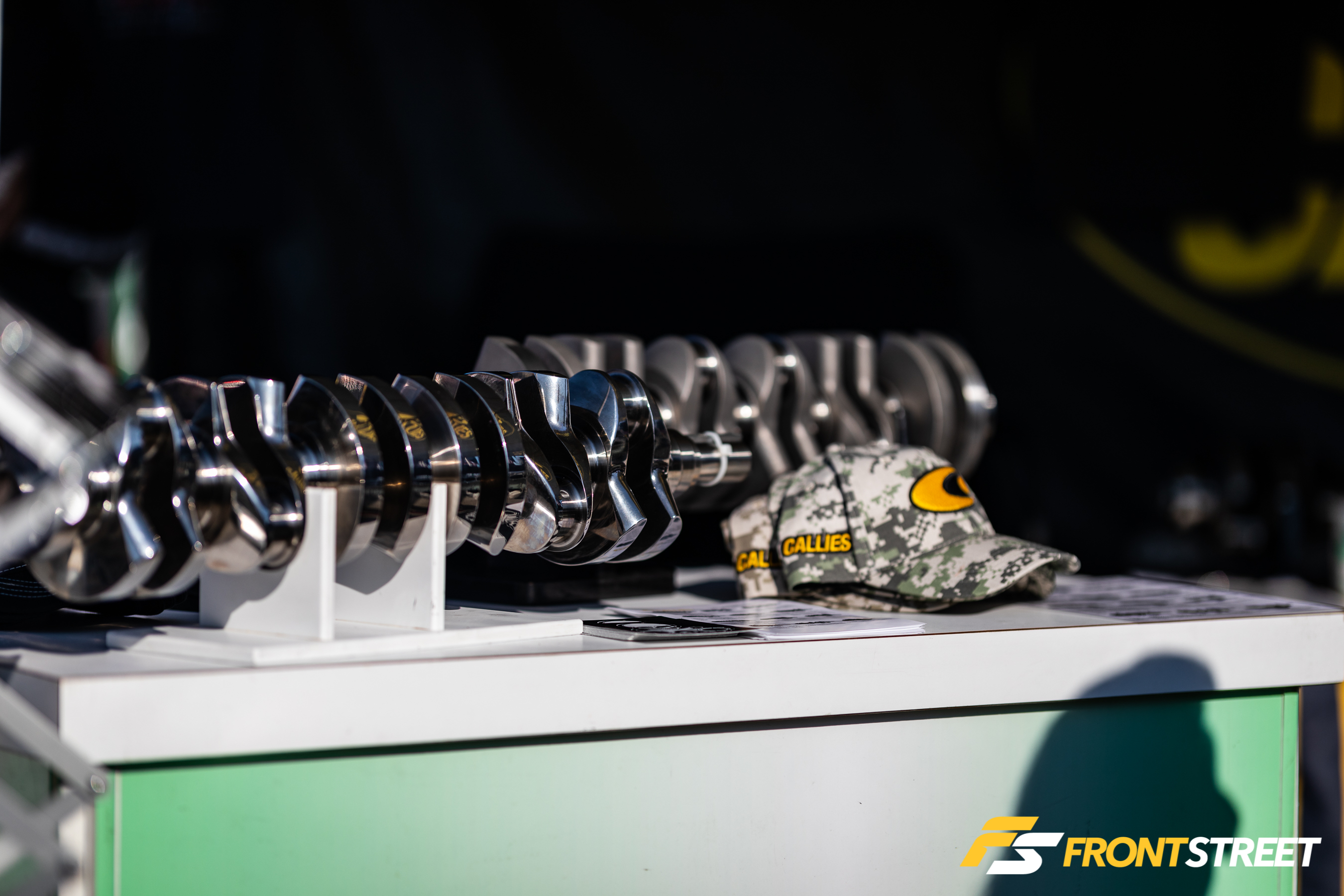
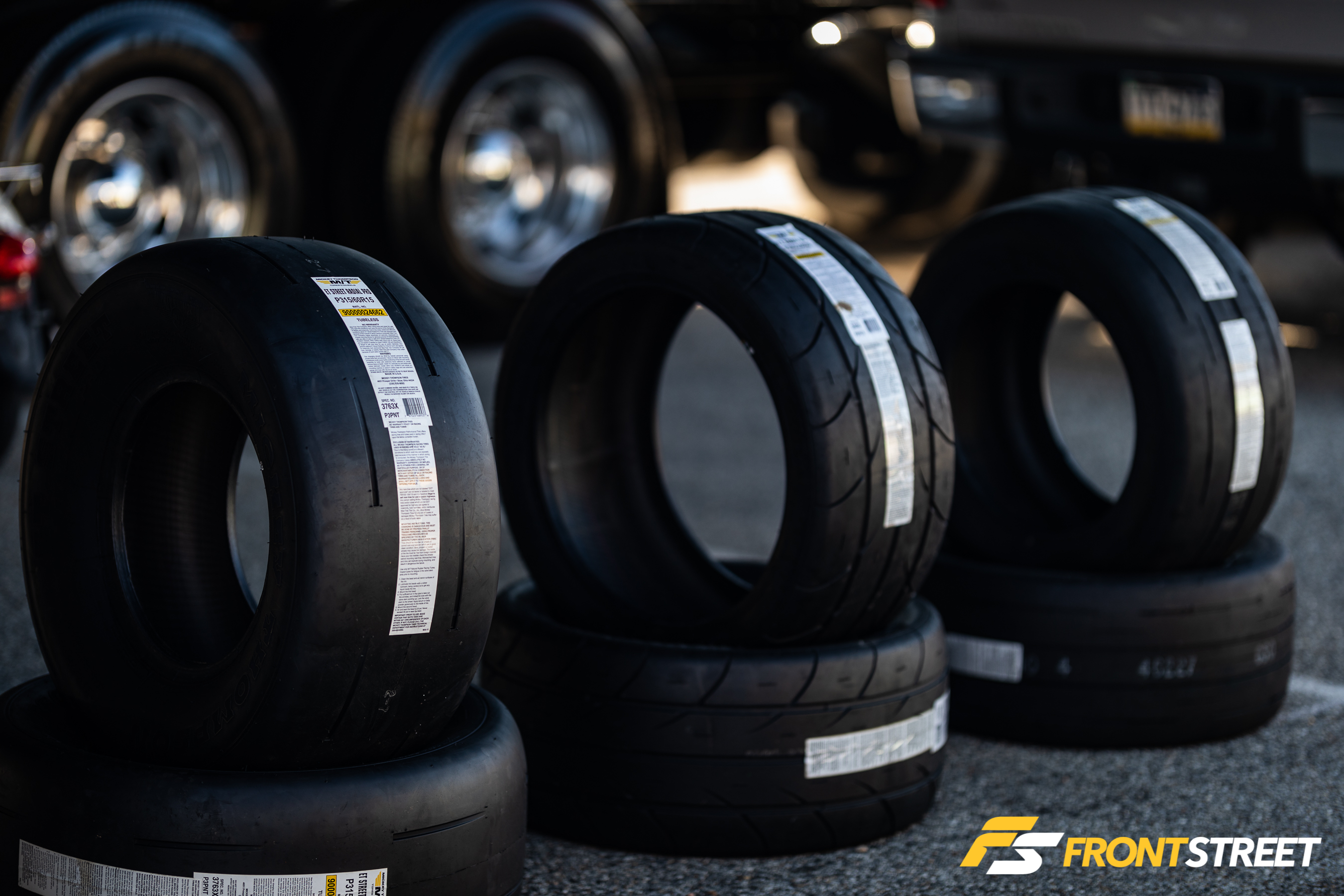

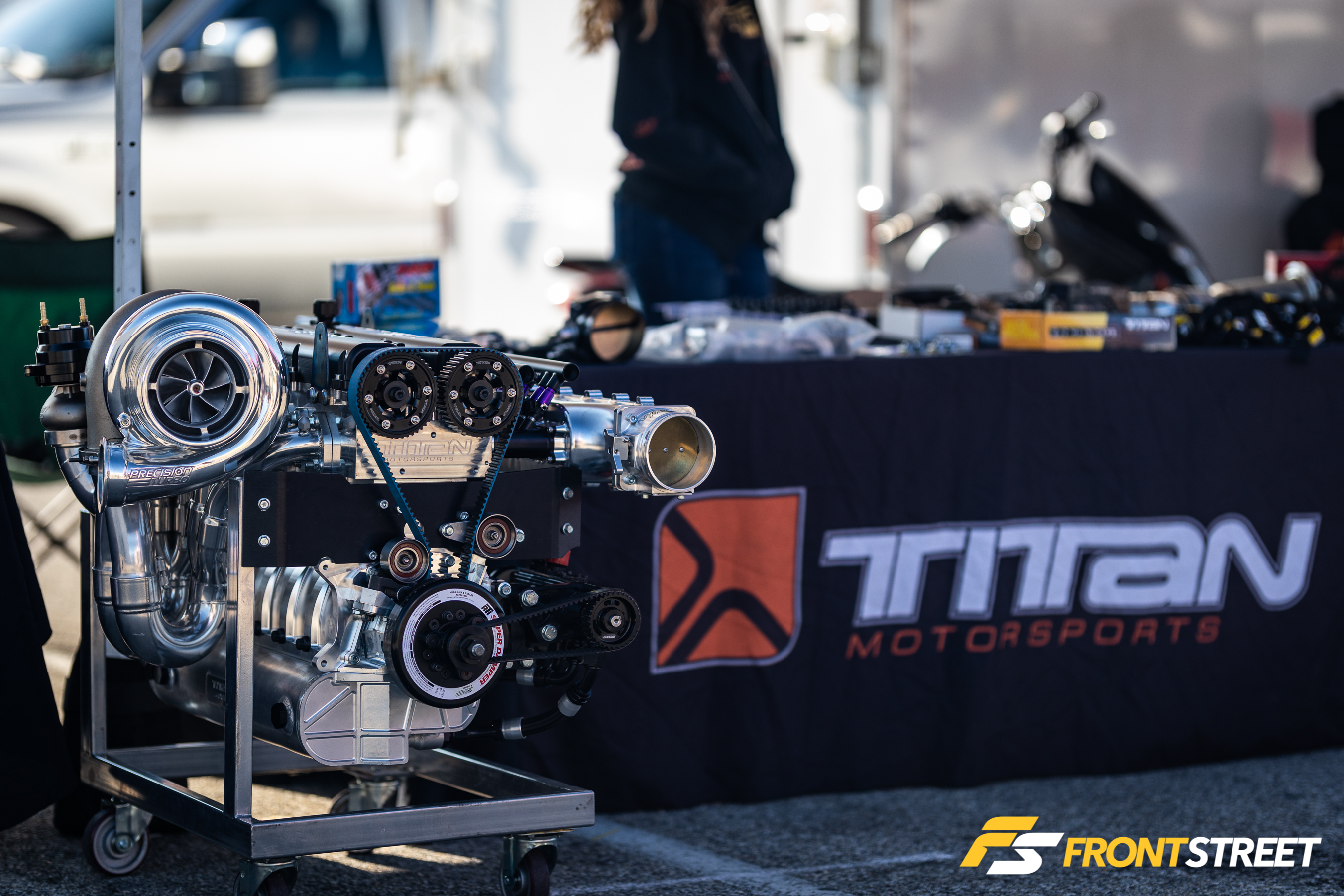
If you somehow get tired of watching all the record-breaking action, the 2,300-foot-long vendor midway has all the new products for your project at home, and merchandise from the top companies in the industry. The event continues to grow in size every year; for 2019, the VIP parking spots up next to the track sold out in an astonishing 90 seconds!
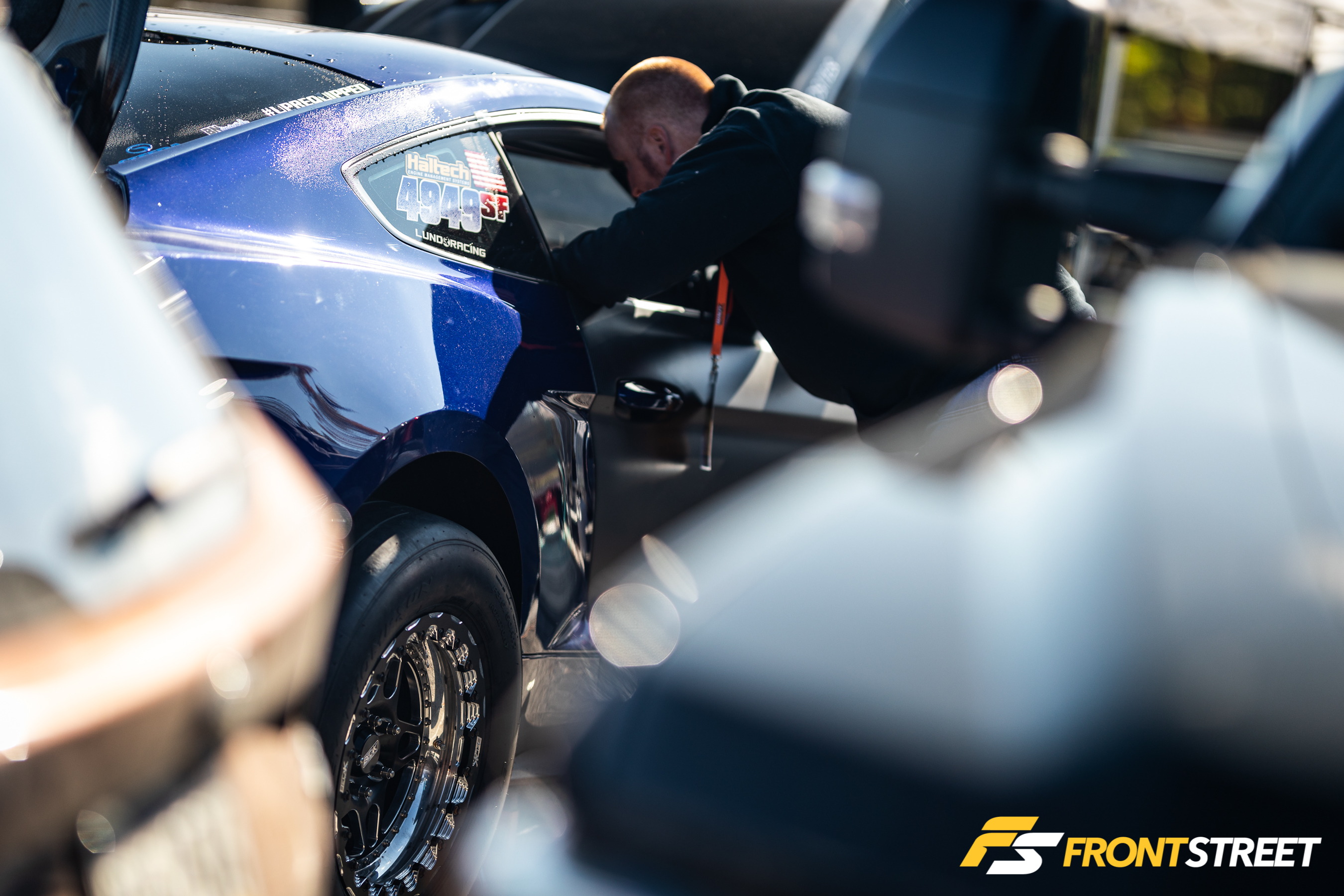

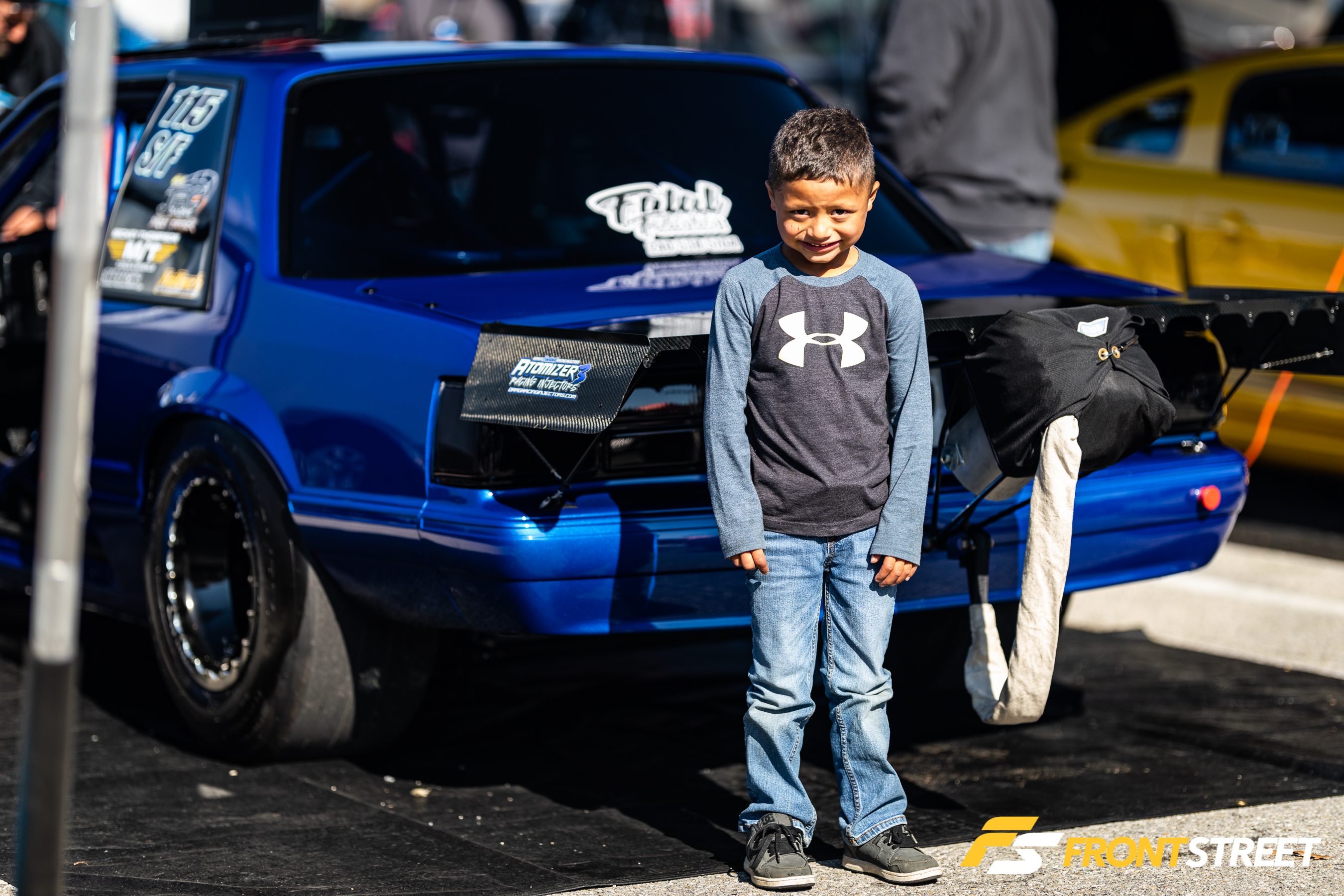
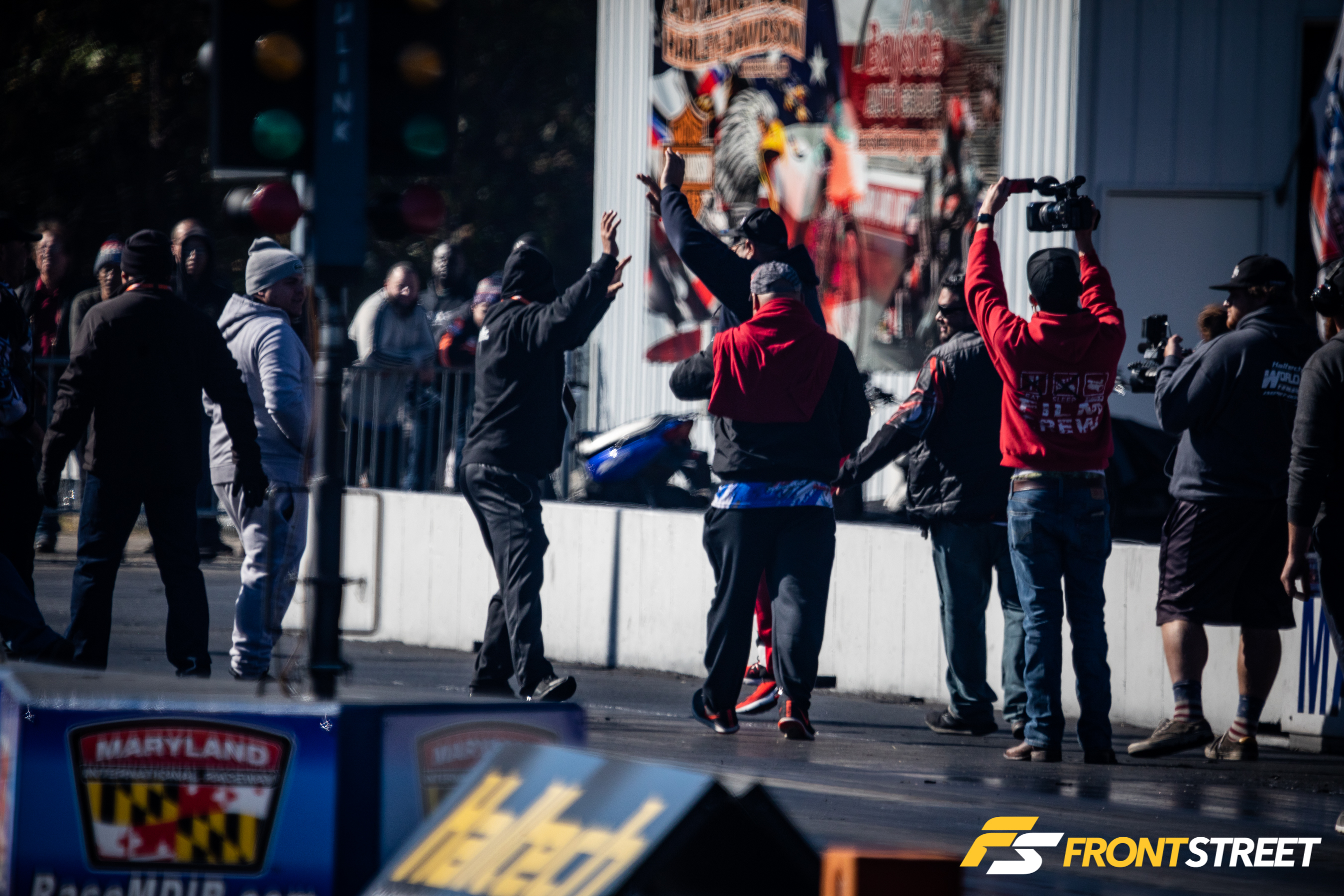
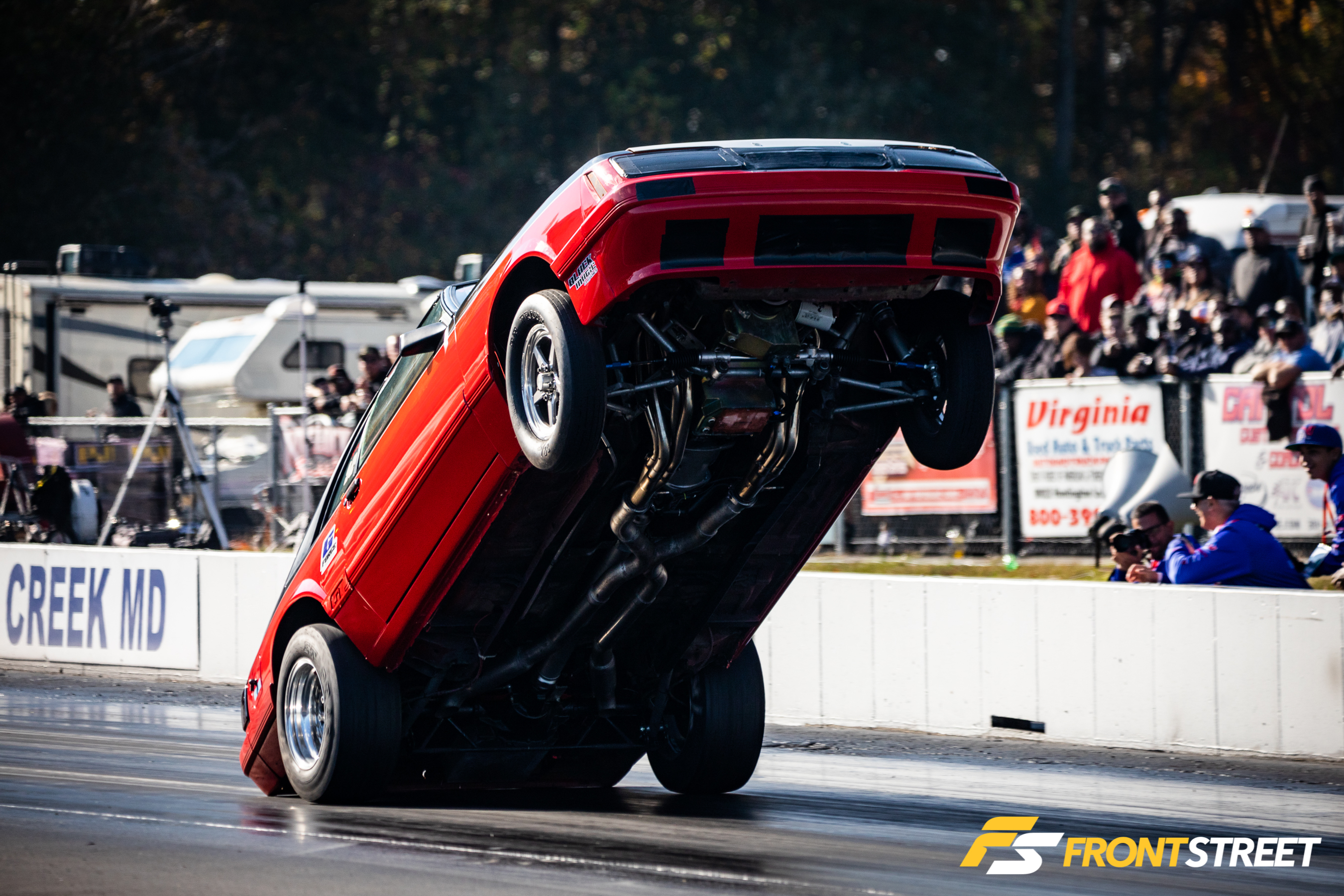
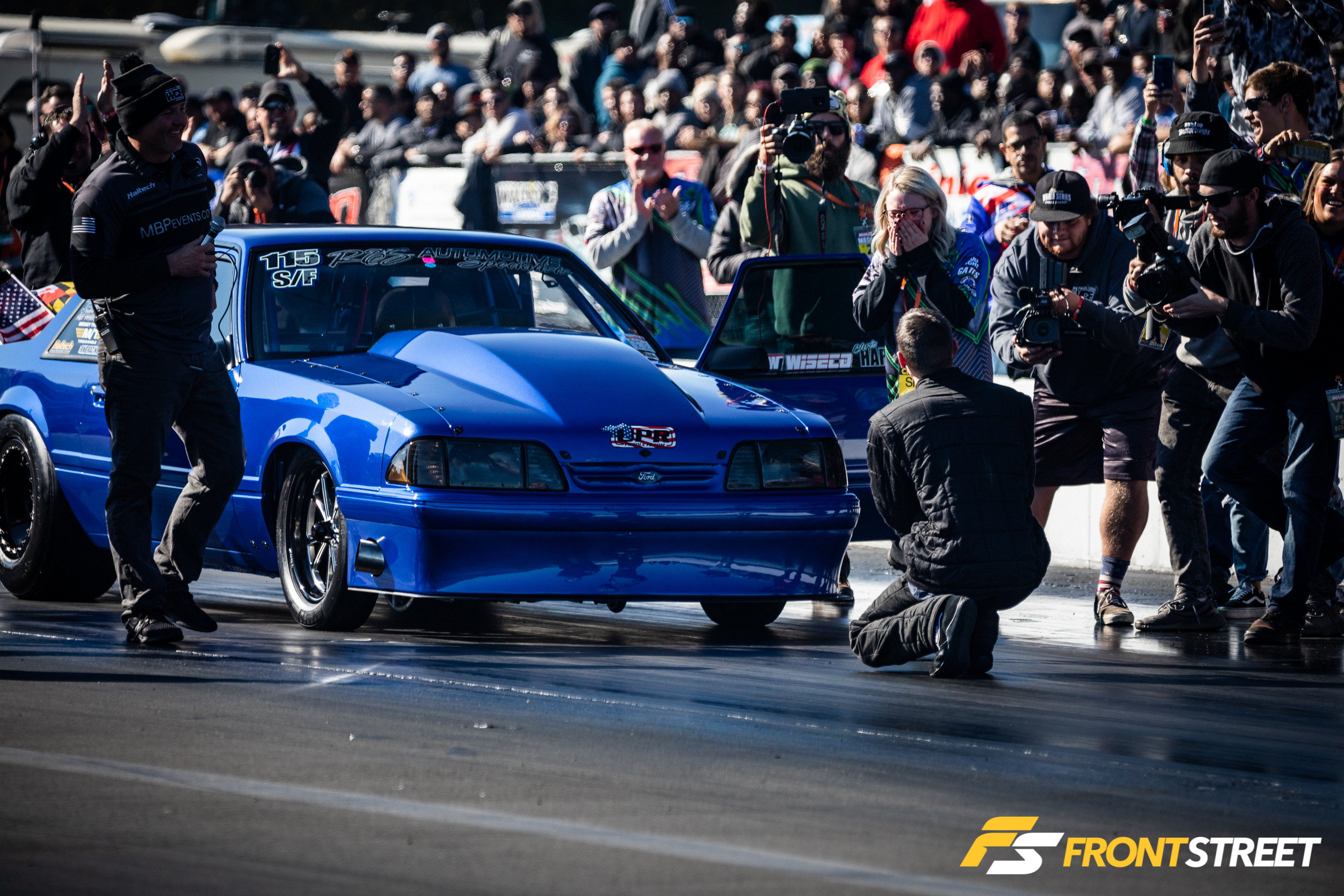
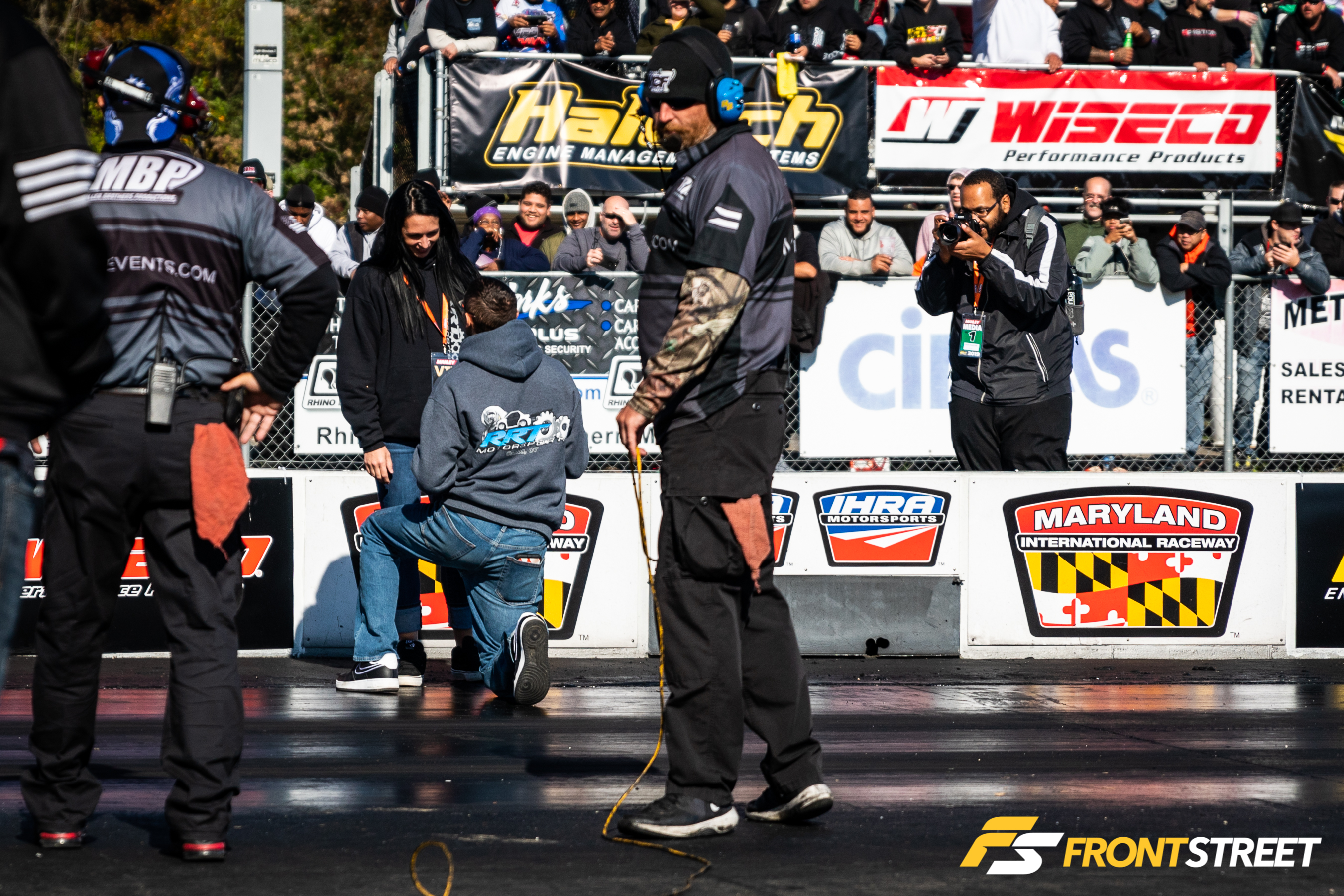
Aside from all of the racing action, broken records, and buzz going on in the pits, my favorite experience of the event was truly something special. A true racer or fan knows all the blood, sweat, and tears that go into getting prepared for an event of this magnitude. There’s no better feeling than to have the support of family and friends, especially a significant other there with you trackside. I was able to see not one, but TWO engagements happen right out on the track in front of thousands of fans and onlookers from the live feed. Racing truly does bring out the best in people.
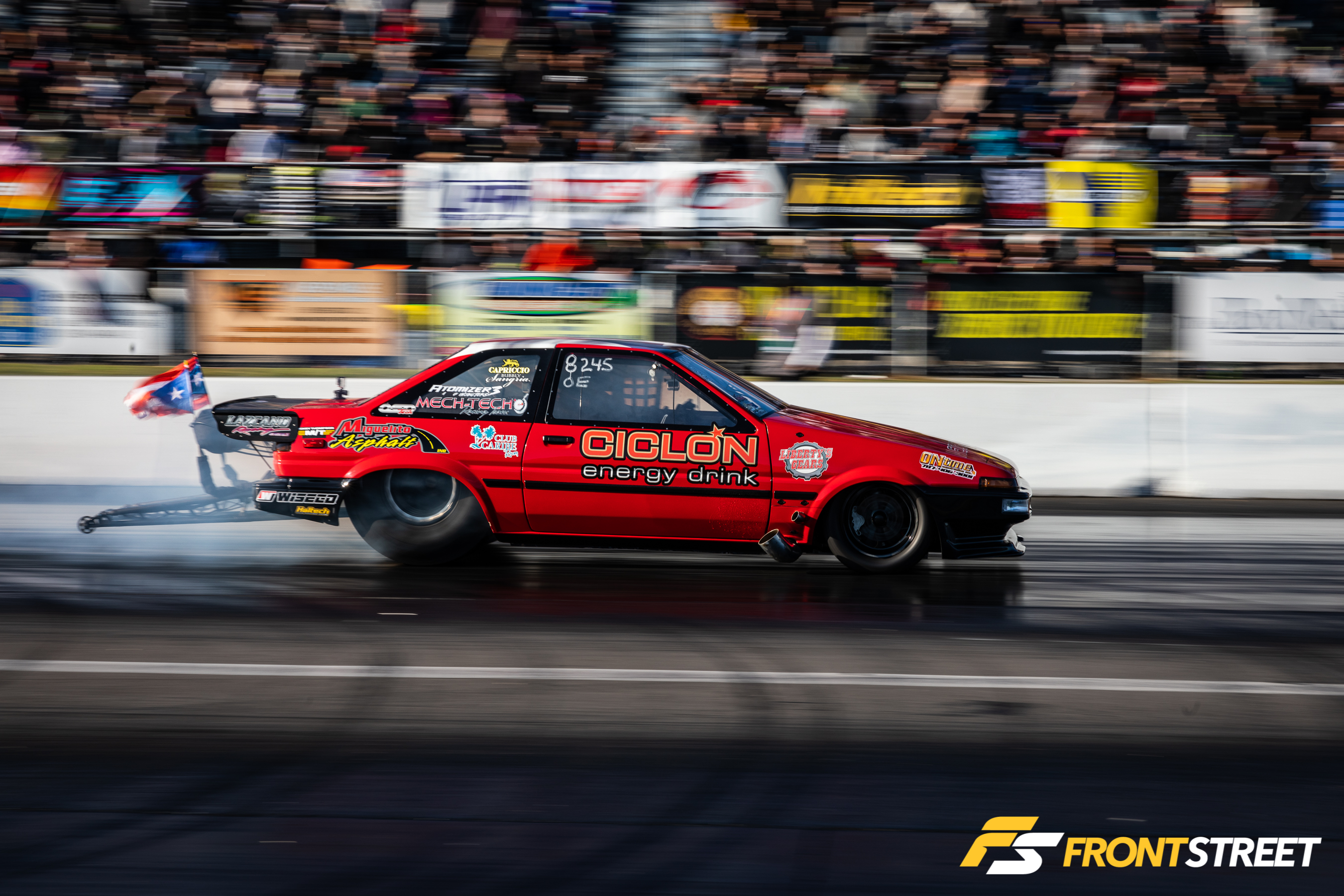
There can only be one team crowned victorious in each class, and after the event, many of the underdog teams—not the top qualifiers you’d expect—were the ones walking away with the World Cup trophies. In the big-daddy Outlaw Vs. Extreme class, Jorge Juarbe in “El Humilde” ran 6.50 at 236 mph in his 2JZ-powered 1986 Toyota Corolla in the final round. In the process, he captured the win over Edward Burgos, who had mechanical issues on the starting line and couldn’t take the tree.
In the Radial Vs. Modified class, Carlos “Karma” Olivo mustered a 6.51 at 208 mph in his 2006 rotary-powered Mazda RX8 to bring in the second overall win for the import side over Scott Bitzer.

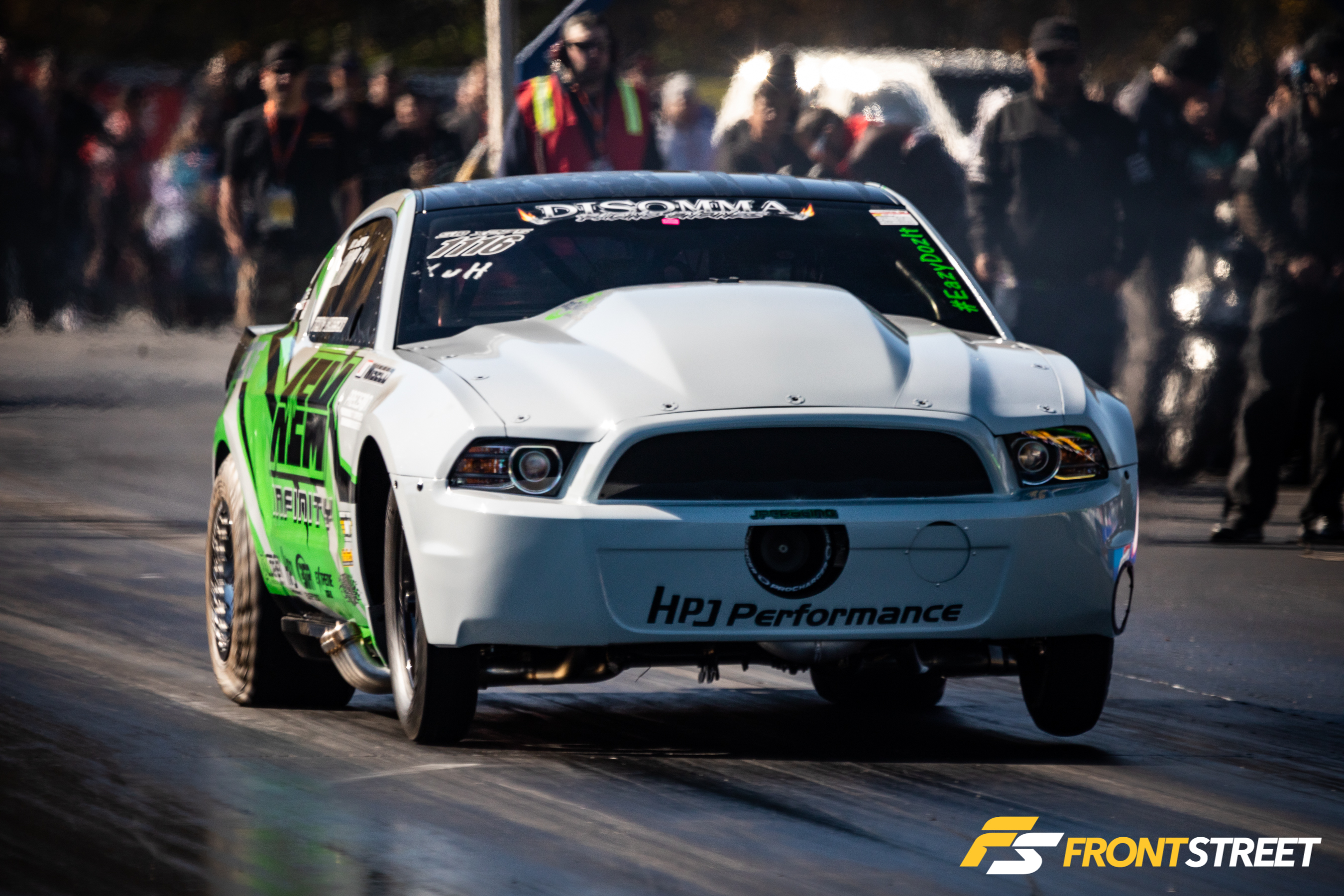
Tony Hobson powered his way through the X275 Vs. Hot Rod class in his JPC Racing/HPJ Performance-backed Mustang to take the win. The achievement of carding a blistering 6.73 at 195 mph on the 275 radial tire—with an impressive 1.05 60-foot time—was unthinkable for Hobson just a week before the race, as the team had battled electrical issues leading up to the event after switching to a ProCharger-boosted small-block Ford platform.
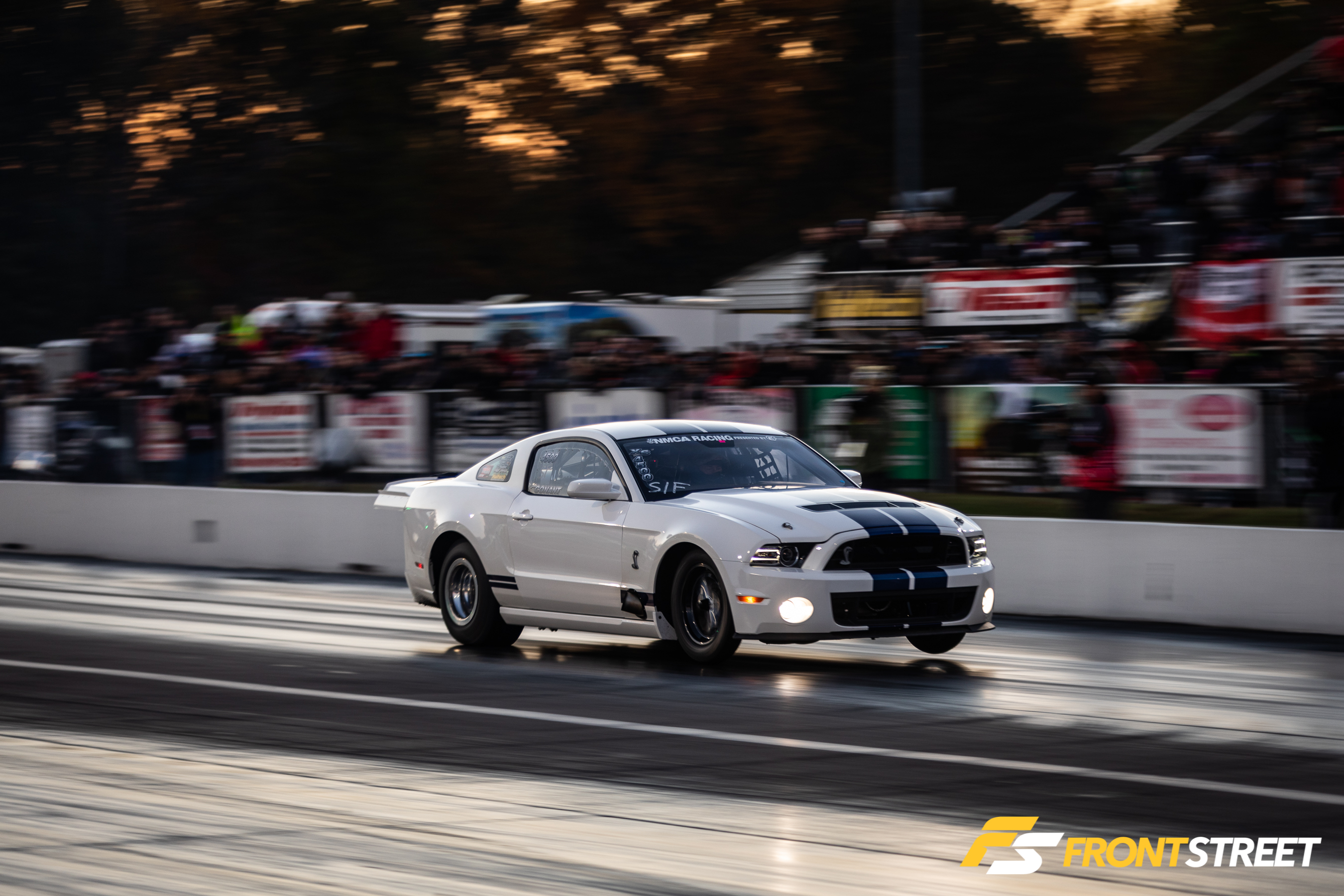
Street Fighter brought major contenders from both import and domestic backgrounds. At the end of the night, the domestics came out on top of Street Fighter, with Jake Conant’s 2014 Ford GT500 Mustang GT500 taking the win over George Farkouh in a drama-filled final round. Conant’s car wouldn’t start, so Farkouh turned his car off and waited for Conant’s team to get it fired. Then, Conant proceeded to win the race on the track, running 7.15—one of his best passes of the weekend—while Farkouh spun in the other lane. With the help of Jamie Miller tuning the suspension and Patrick Barnhill handling power management, Conant kept improving all weekend long.
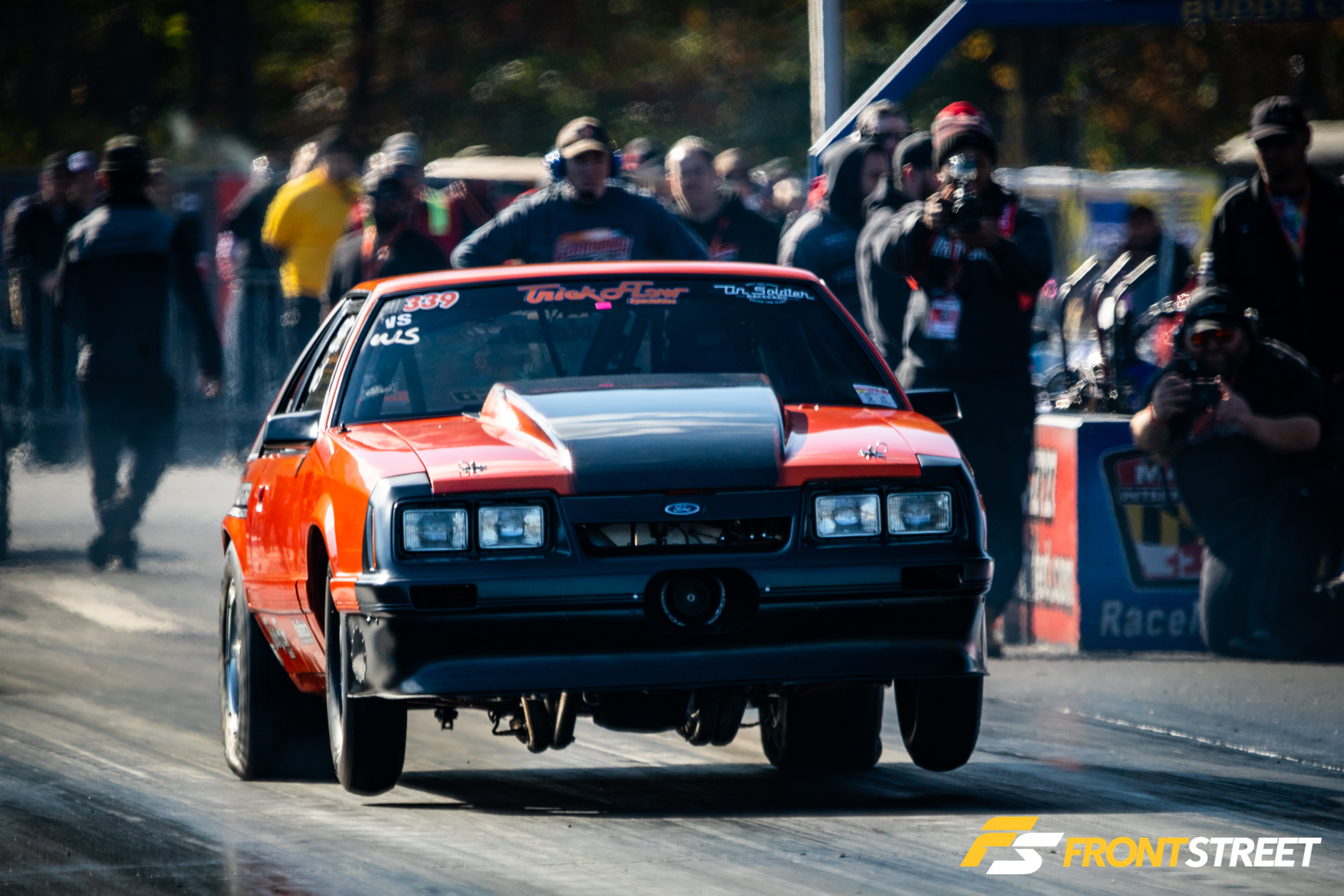
Wild Street always has a mixed bag of goodies with both import and domestic entries, equipped with both auto and manual transmissions. It’s always fun watching auto and clutch-assisted cars go toe-to-toe with one another, and the result put Martin Connelley into the winner’s circle with his 1986 ProCharged Mustang.
Super Street also sees a good mix with some being of the front-wheel-drive variation, though Patrick Pelchat held on for the win in his 1989 Toyota Supra. True Street brings out unique vehicles like Joe Fisher’s 2JZ-swapped Toyota Tacoma, which came away with the W this year over Raif Fezjo.
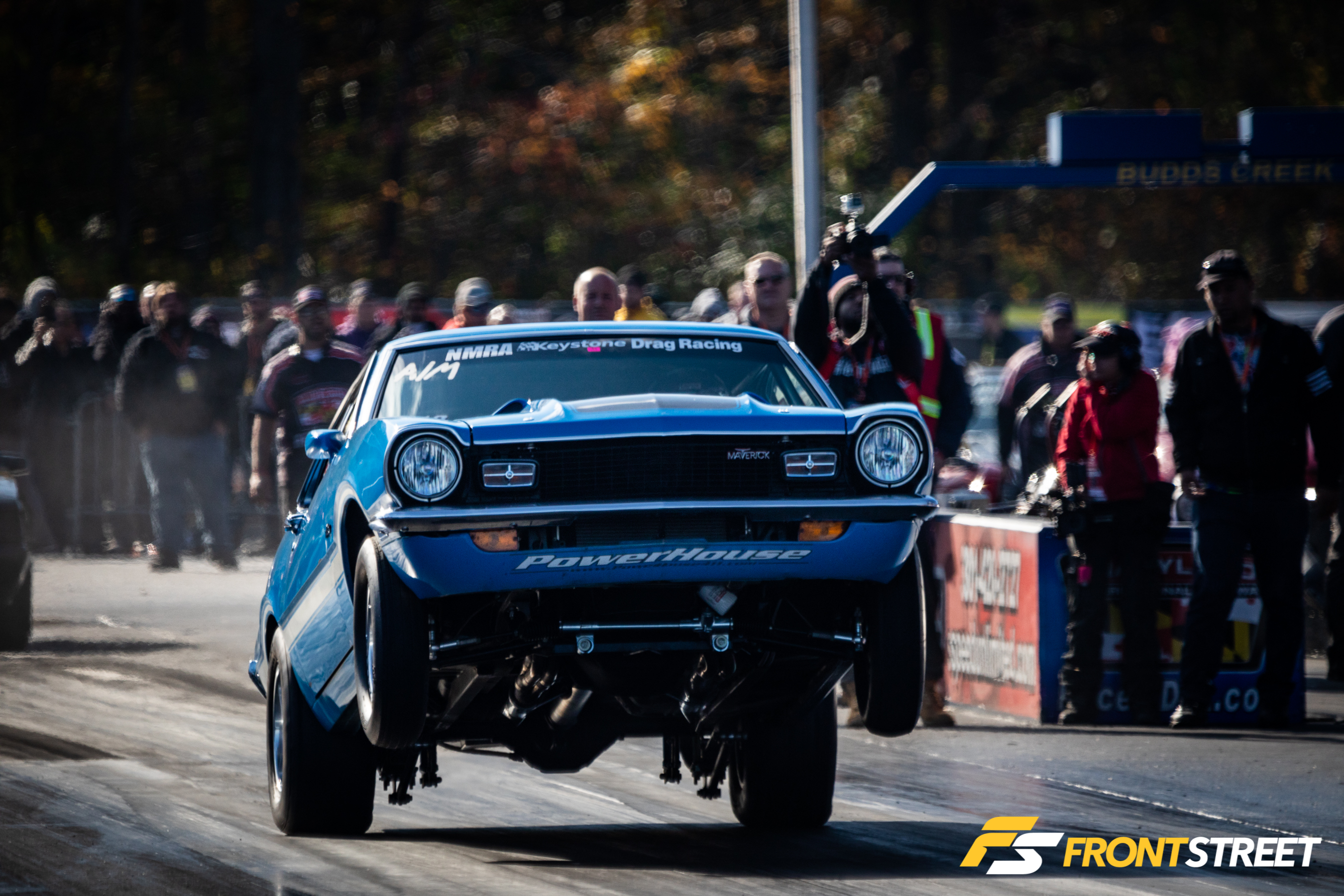
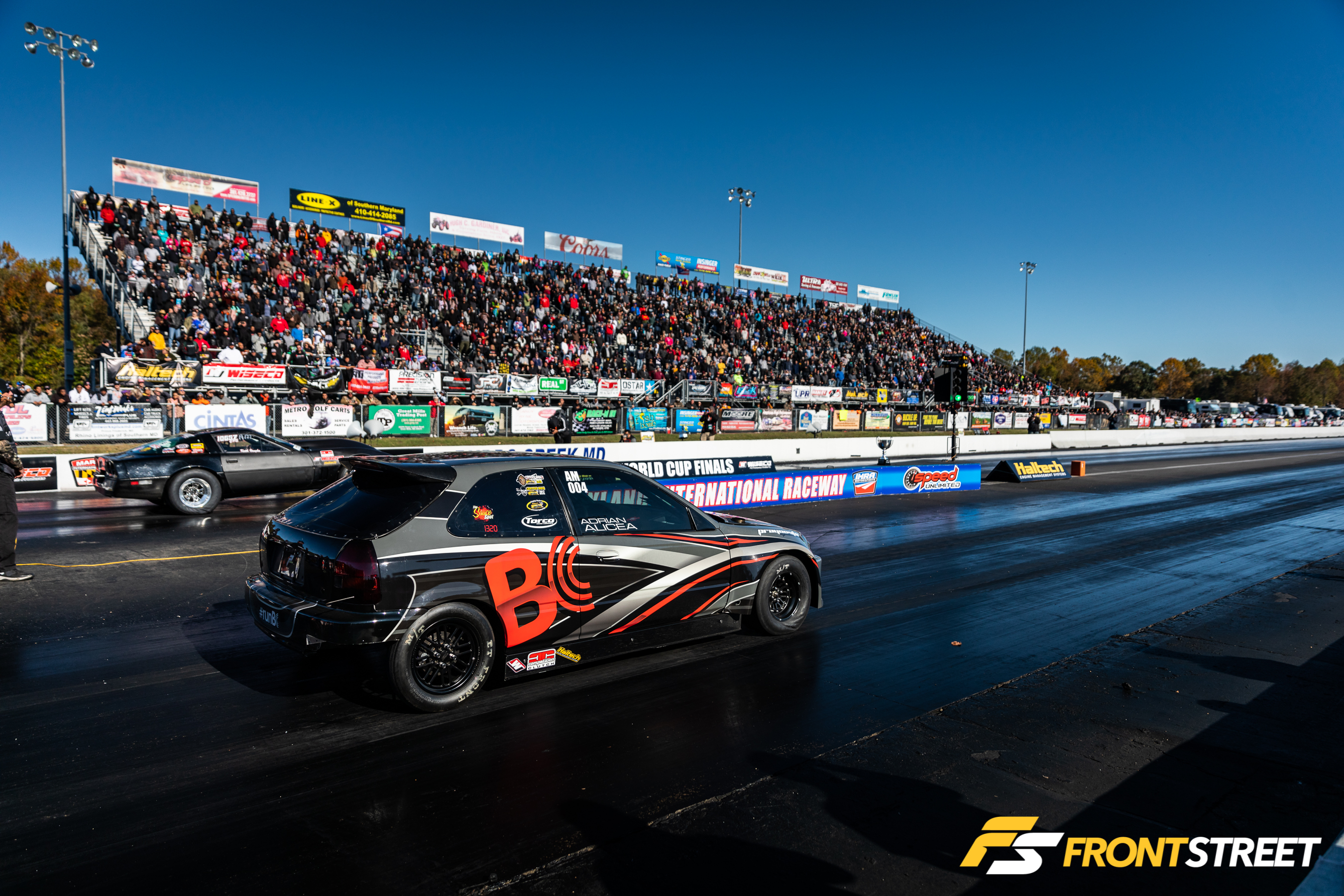
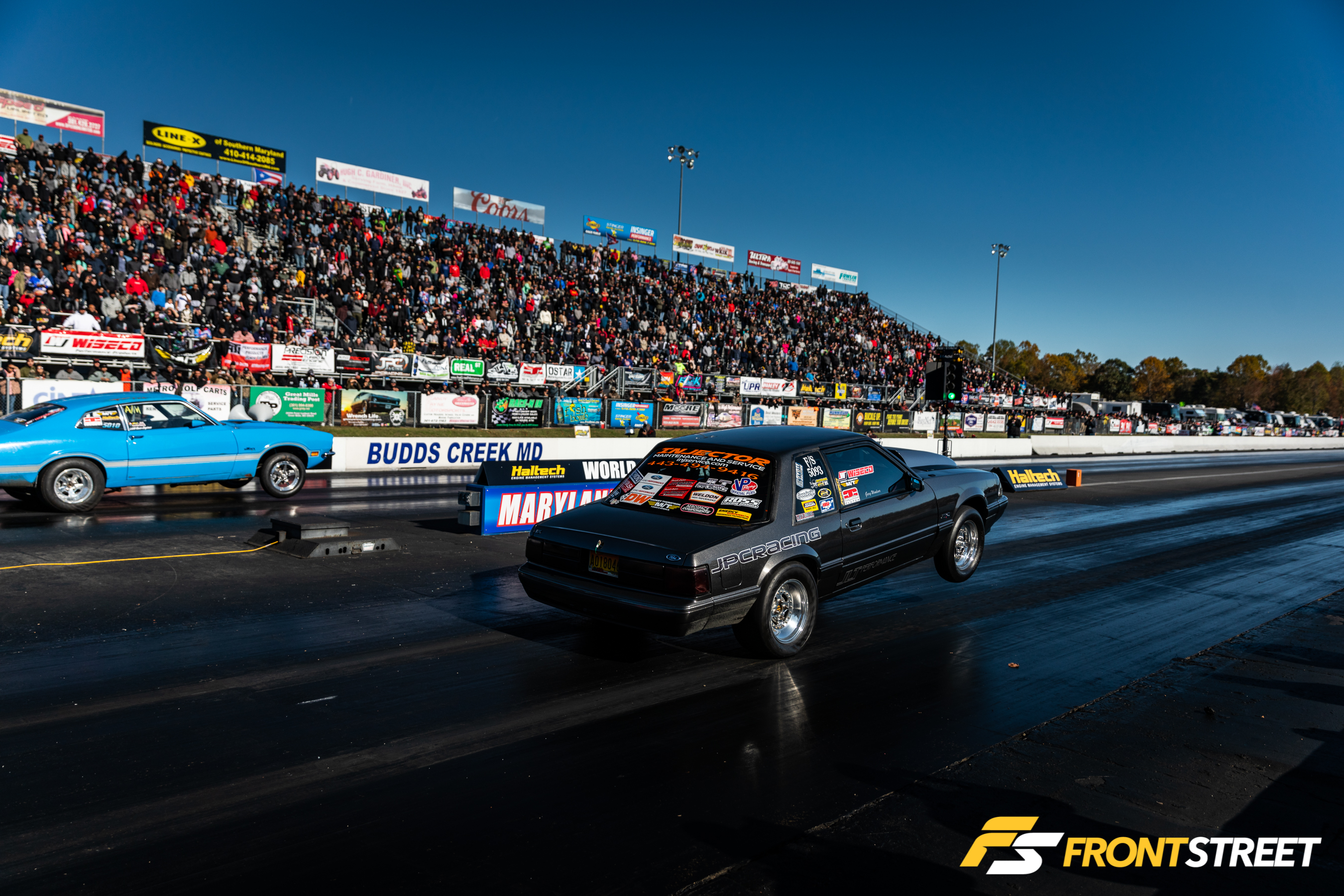
Although it’s the slowest class at WCF, All Motor always intrigues me. There is only so much weight you can take out and so much power you can get from an all-motor setup, and these guys do all they can to push the limits every year. Of course, a big V8-powered rear-wheel-drive car won, right? Actually, no. Aweis Adde wowed the crowd in his 2000 Acura Integra, running an astonishing 8.75 at 162 mph in the final round to dispatch Teddy Weaver, breaking the all-motor front-wheel-drive record in the process!
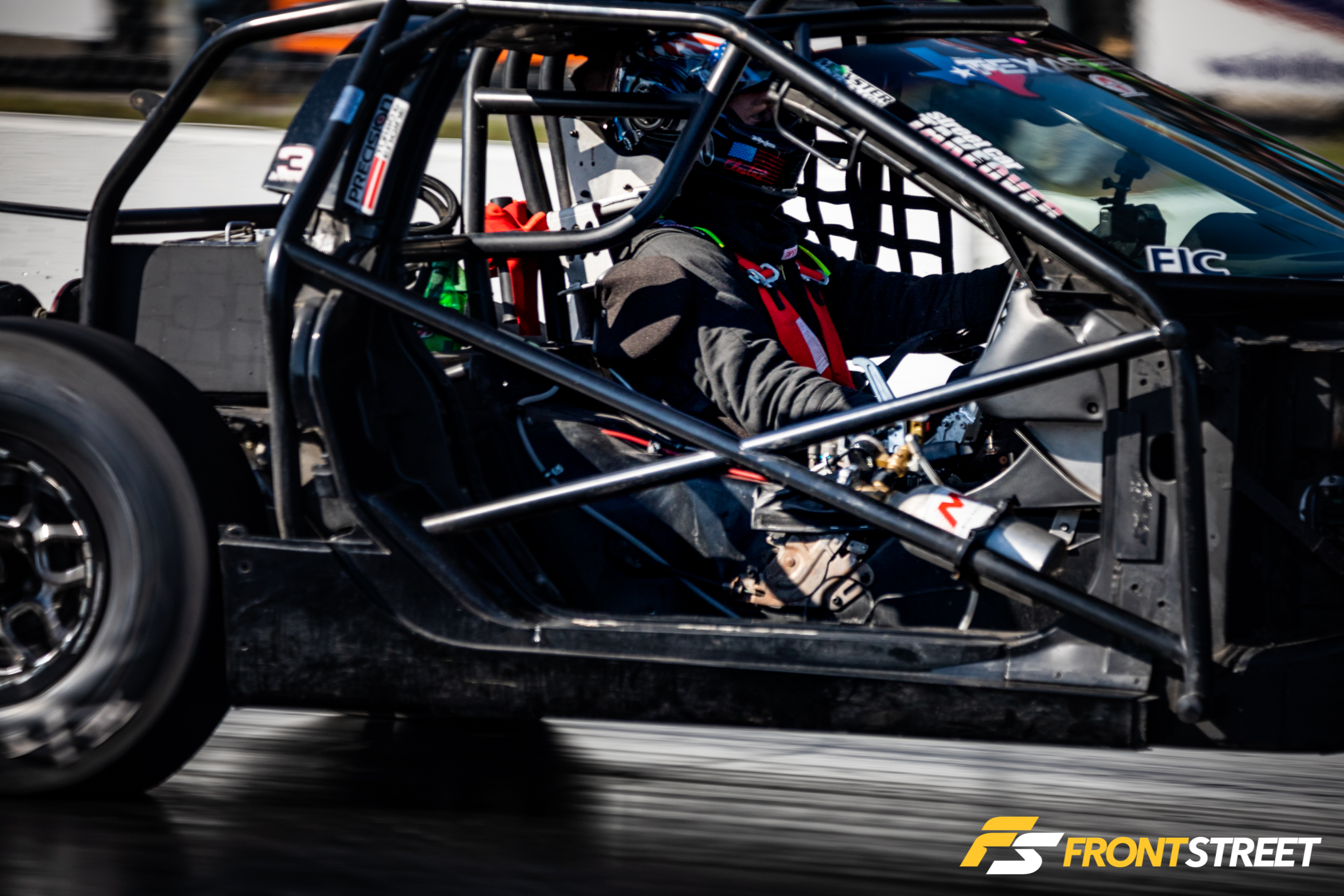
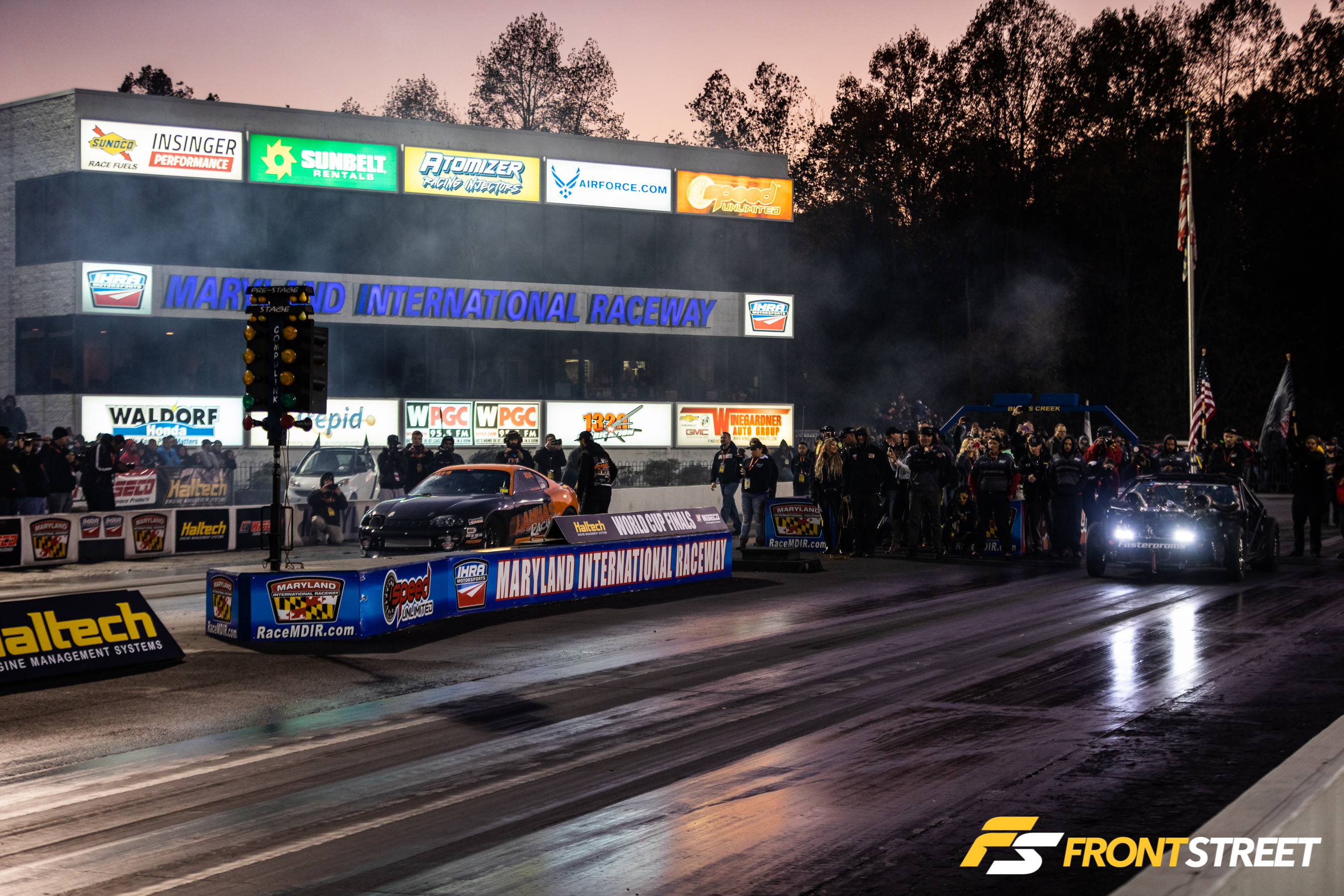
For the man-pedal guys, there was a little something extra—the Wild Street 6-speed Shootout. You’ve seen Garrett Mitchell and his car all over the internet; you may know him as YouTube star Cleetus McFarland and the car as Leroy The Savage. Leroy may look like something you only see in a movie, but it is a 2001 Chevy Corvette with no body panels and an exocage. Mitchell piloted Leroy to the winner’s circle in the Shootout.

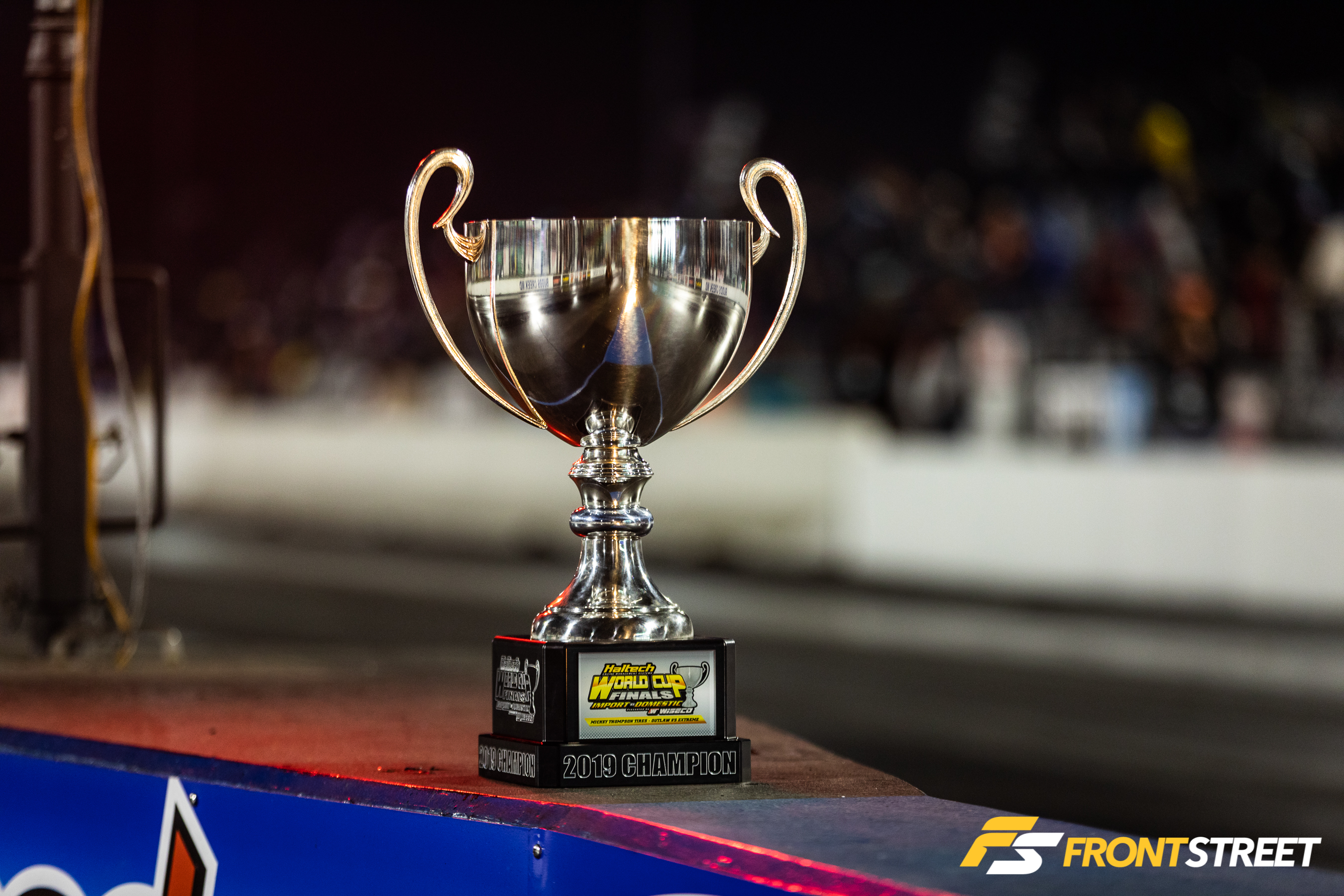
One of the many reasons why so many teams flock to MDIR every year for the World Cup Finals event isn’t just because Jason and Chris Miller are some of the best in the business when it comes to track prep—it’s because during this time of the year when ambient temps come down, so does the density altitude. Mineshaft conditions happen here every year. This year, conditions were beyond perfect, with a DA of negative 1,300 feet at one point during the weekend. Records were bound to fall, and that they did.
Although the following might be considered micro-records, they are no less important than overall class records. It is through the pursuit of these types of records that improvements are made in parts durability and consistency, which trickles down to the larger market.

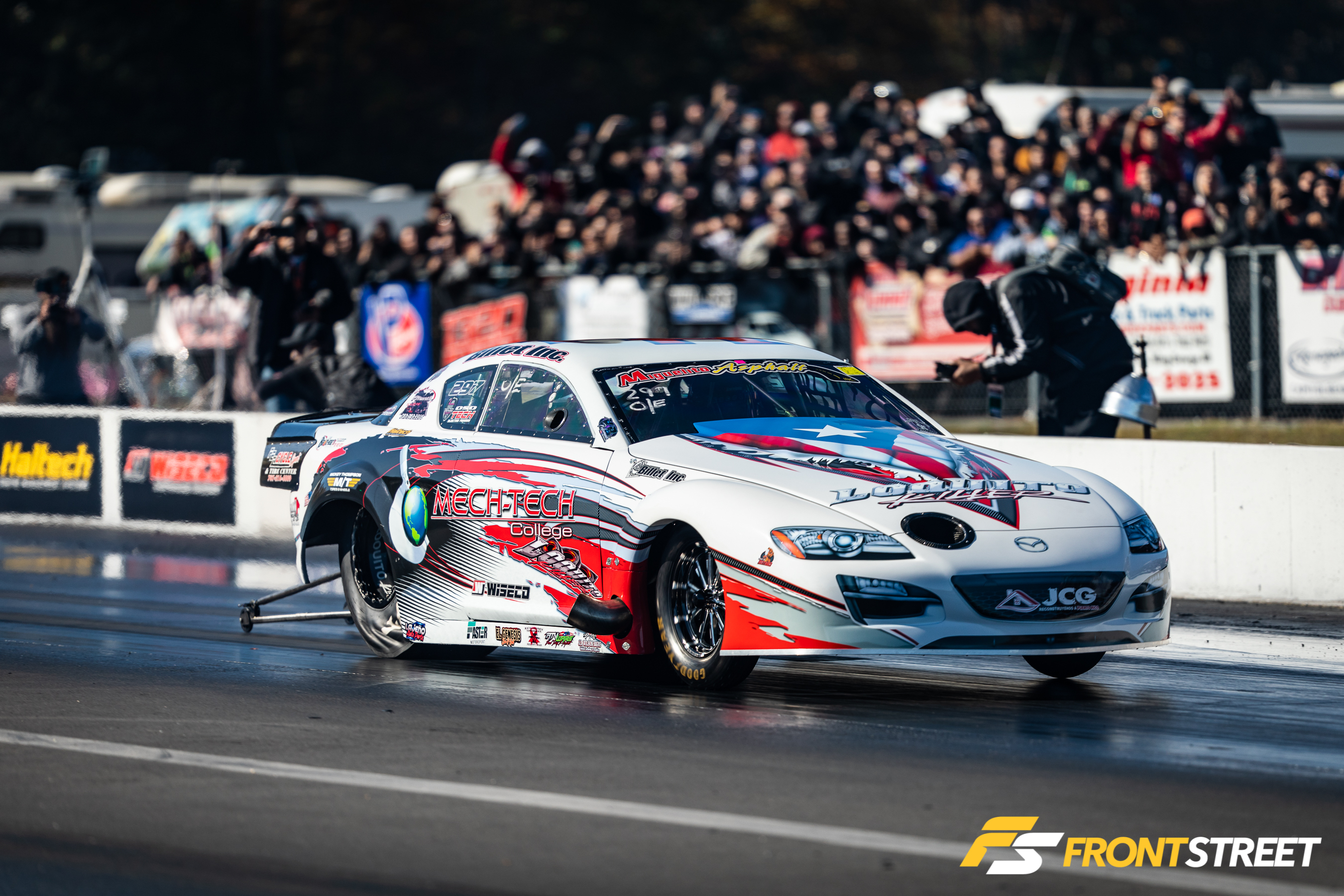
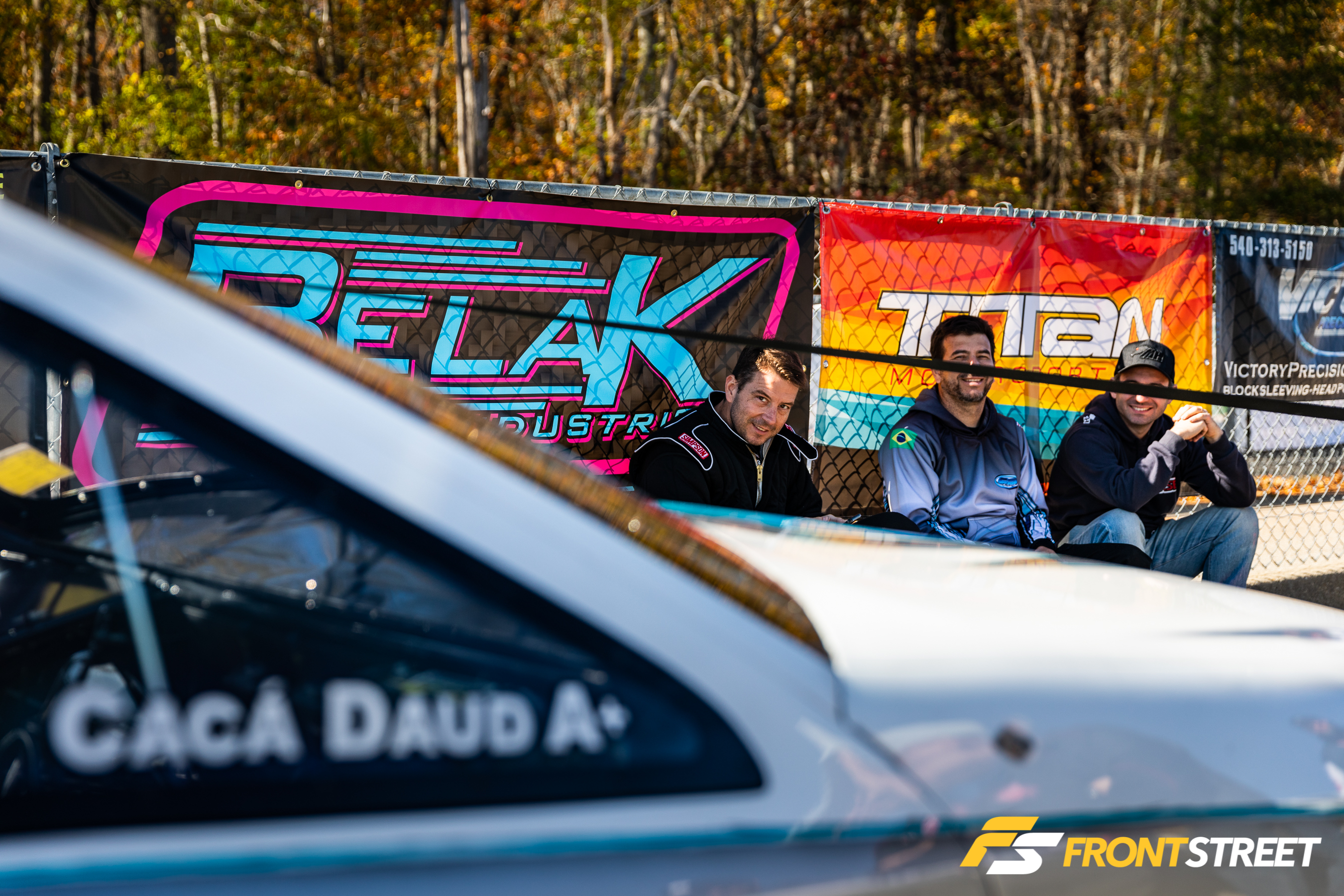
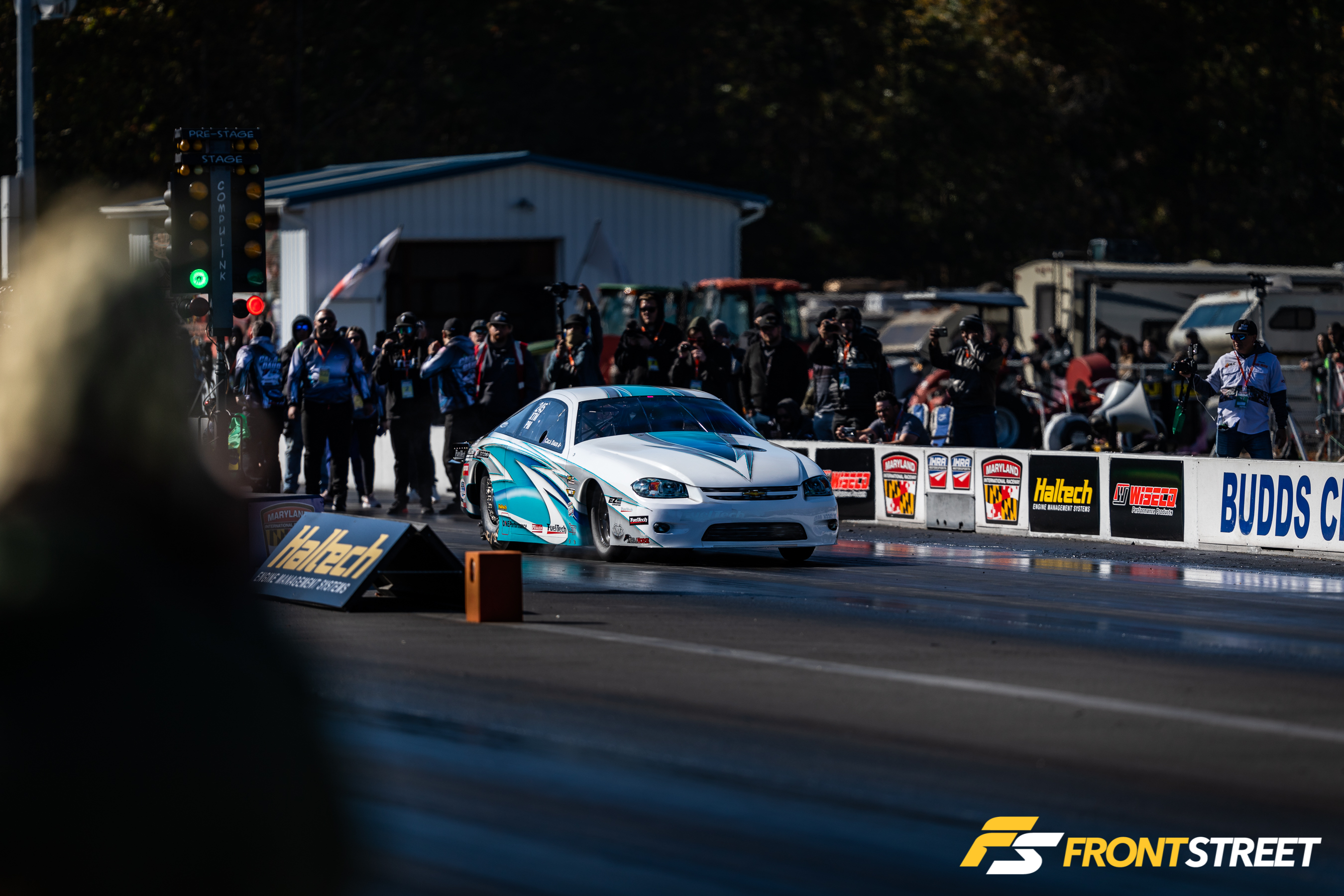
The Mech-Tech team is now the rotary-engine kings, as driver Edwin Burgos piloted the team’s 20B rotary-powered RX8 to an outstanding 6.08 at 232 mph! This performance shows that much is possible with a little powerplant. Carlos “CaCa” Daud of Brazil would agree, as his four-cylinder turbo Cobalt—powered by a CX20E Opel engine—is the quickest in the world, with a 6.18 at 224 mph achieved here at WCF. Another import favorite among the fans is Danny Perez and his beautiful FD stock-chassis Mazda RX7, which is powered by a manual-transmission-backed rotary engine. Perez was able to shift his way into the new stock-chassis stick-shifted rotary record with an 8.49 at 173 mph.
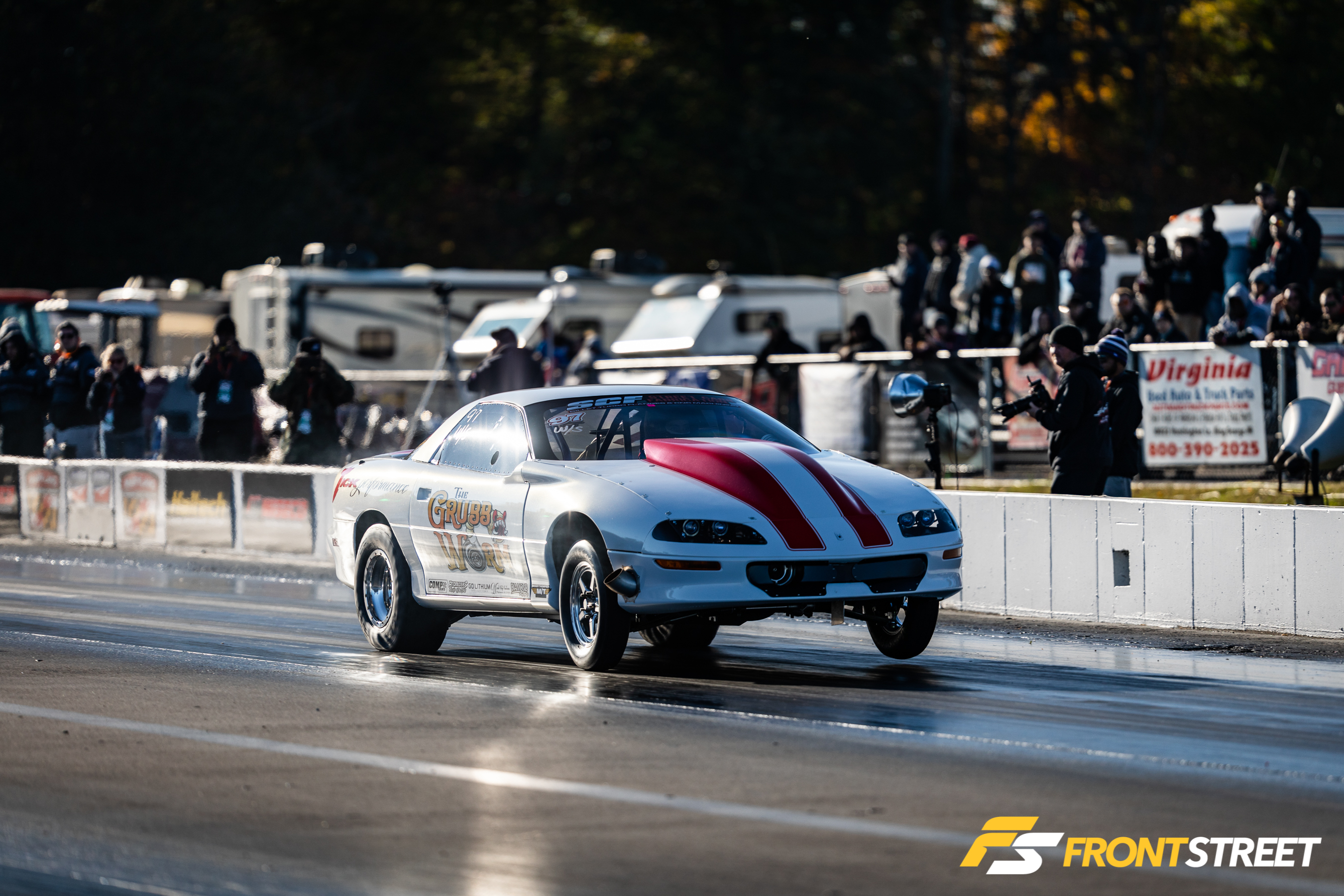
Speaking of the man-pedal, most racing fans dream of having the talent and platform capable of going into the single-digit quarter-mile range. With all the high-tech automatic transmissions out now, many take the easy way out and go auto for consistency reasons. Johnathan Atkins—the owner of Tick Performance—has a vision, but not one you might think. Tick is known as an LS-based performance shop, but Atkins took a fourth-gen Camaro, dubbed it the Grubb Worm, and powered it with a turbocharged LT1 backed up by a T-56 transmission. This car has been shaking things up in the stick-shifted game lately and came ready to play. Having already clinched the six-speed rear-wheel-drive record, he ran 7.30 at 196 mph to best his record by two-tenths of a second!

Jon Lund of Lund Racing is well-known as one of the premier tuners in the Coyote Mustang game. He captured the quickest Ford independent rear suspension and 6R80 transmission records all in one pass at WCF; with the help of a built Power By The Hour-built 6R80, he laid down a 7.67 at 183 mph in the Blue Goose Mustang.

Also from the Ford camp, Keith Rhea broke the record for the quickest Mod motor door car (with a non-Pro Mod chassis) both in the eighth- and quarter-mile, turning in a blistering 6.66 at 209 mph.
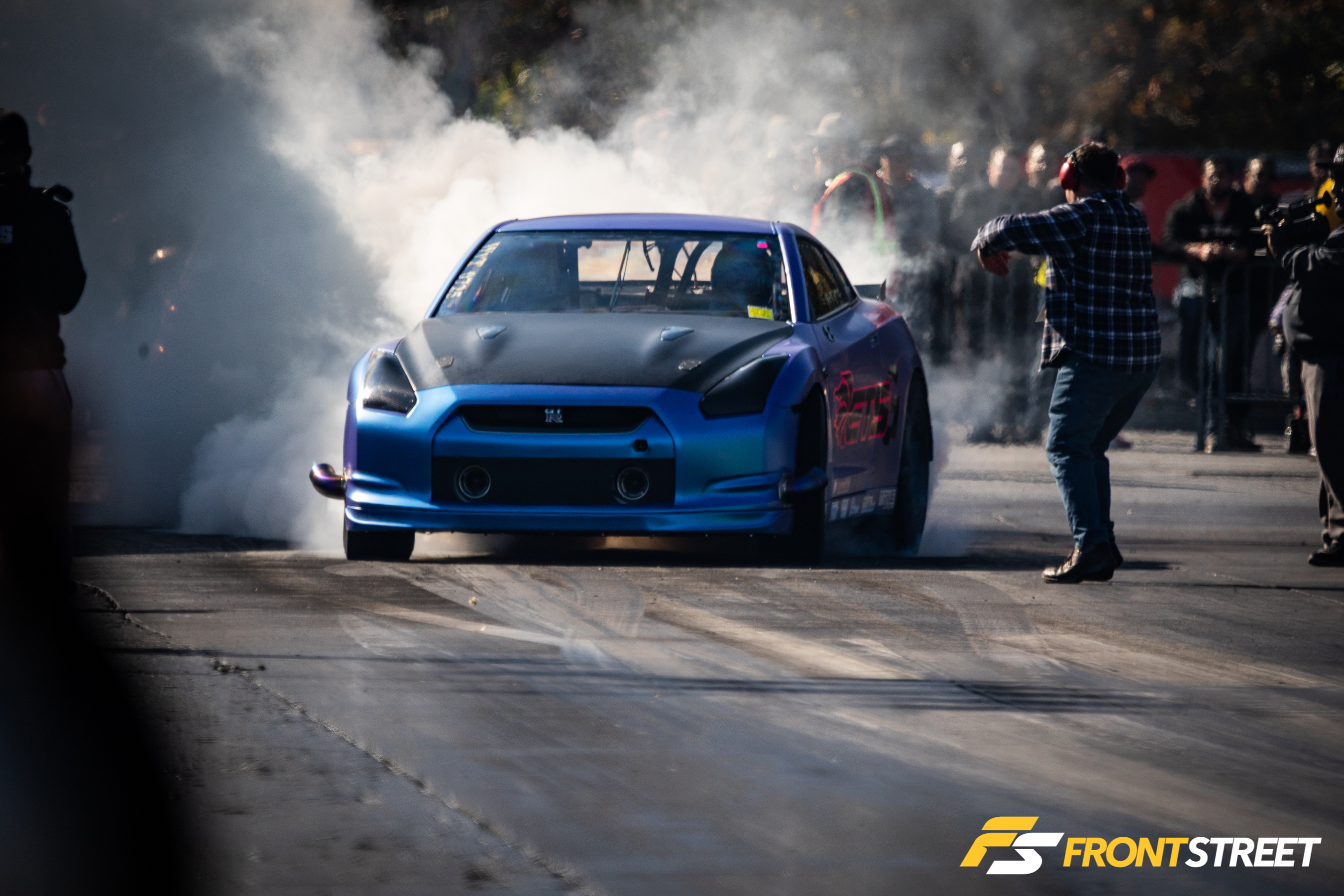
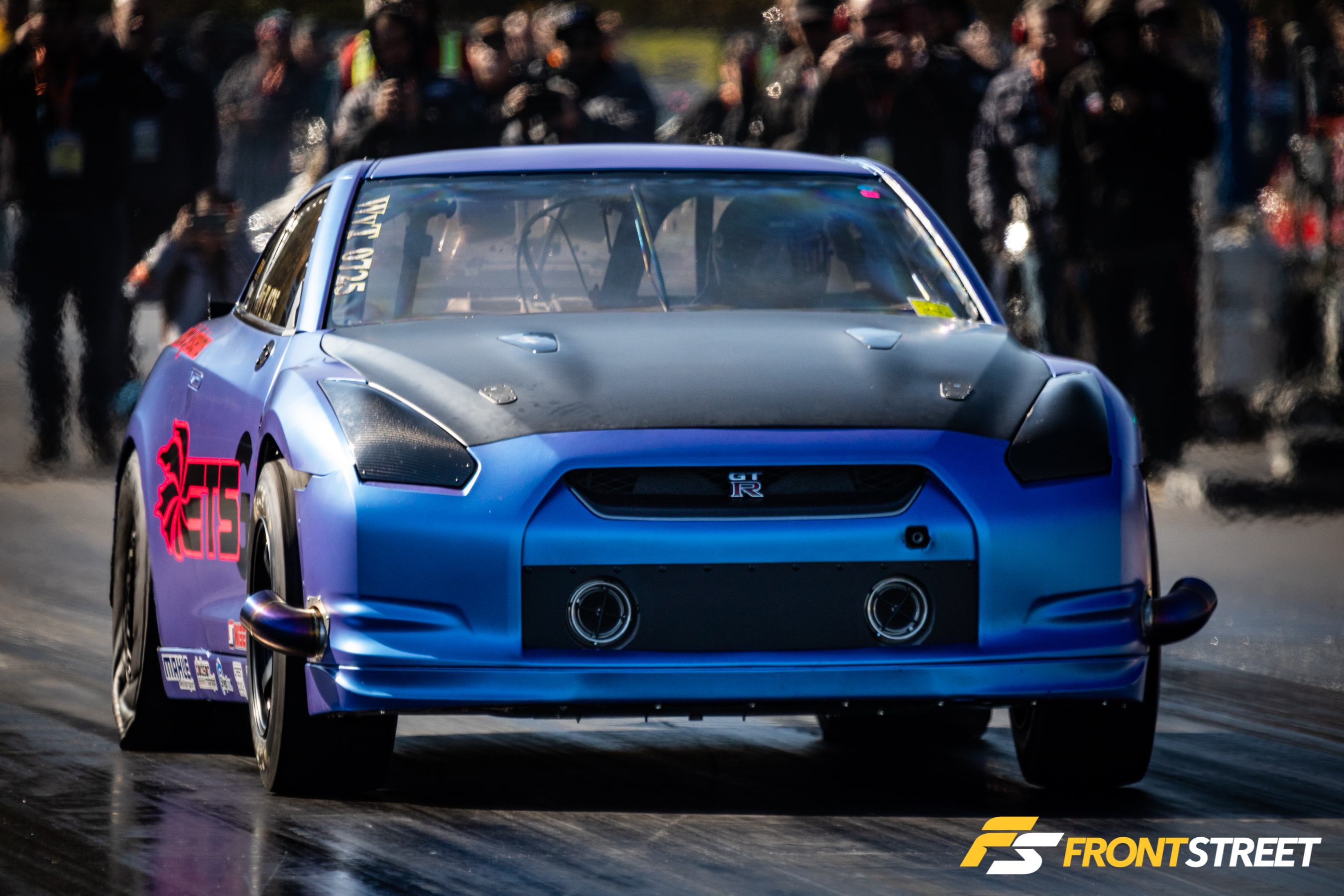
Ever since the Nissan GT-R R35 chassis with its 3.8-liter twin-turbo v6 and all-wheel-drive platform were released, car guys have been pushing the envelope of how fast they can go. Gidi Chamdi of the Extreme Turbo Systems team is a household name in the GT-R realm. It was only right for him to take a shot at his record again for the fastest GT-R in the world, which he achieved by resetting the record to a 6.54 at 225 mph. Extreme Turbo Systems was also able to squeeze out another record—this time on the Evo X platform—by blasting to an 8.01 at 183 mph in the quarter-mile.
Aslier Jesus also stood out among the crowd in his GT-R, becoming the first to the 6s on 28-inch tires while with a stock engine block. He also ran the quickest pass ever in the Street Fighter class, clicking off a 6.87 at 207 mph.

When you think of heads-up 275 radial racing, eighth-mile races come to mind, and for the most part, you’d be right. Bill Lutz likes to be different, though, and he had his sights on being the quickest and fastest man on a pair of 275 radials in his beautiful Camaro, with son Kenny tuning the car. On a mild tuneup, he was able to drive the car to a 6.00 pass at 242 mph, which set that very record. The best part about it? He looks to lower that ET in the future, as he stays that there is most definitely more power in the tuneup.

One thing that you can guarantee while attending the World Cup Finals Import Vs. Domestic event—aside from having one of the best racing experiences of the year—is that you WILL see records fall year after year. Why? Because promoter and track prep gurus like the Miller brothers will continue to provide the best track surface around, and racers from all over the globe will work harder and harder to break the boundaries of what is possible to achieve as technology advances, and they learn more about how their program can become faster. Take a look through the highlight reel below and experience one of the best events of the season through my camera lens.

